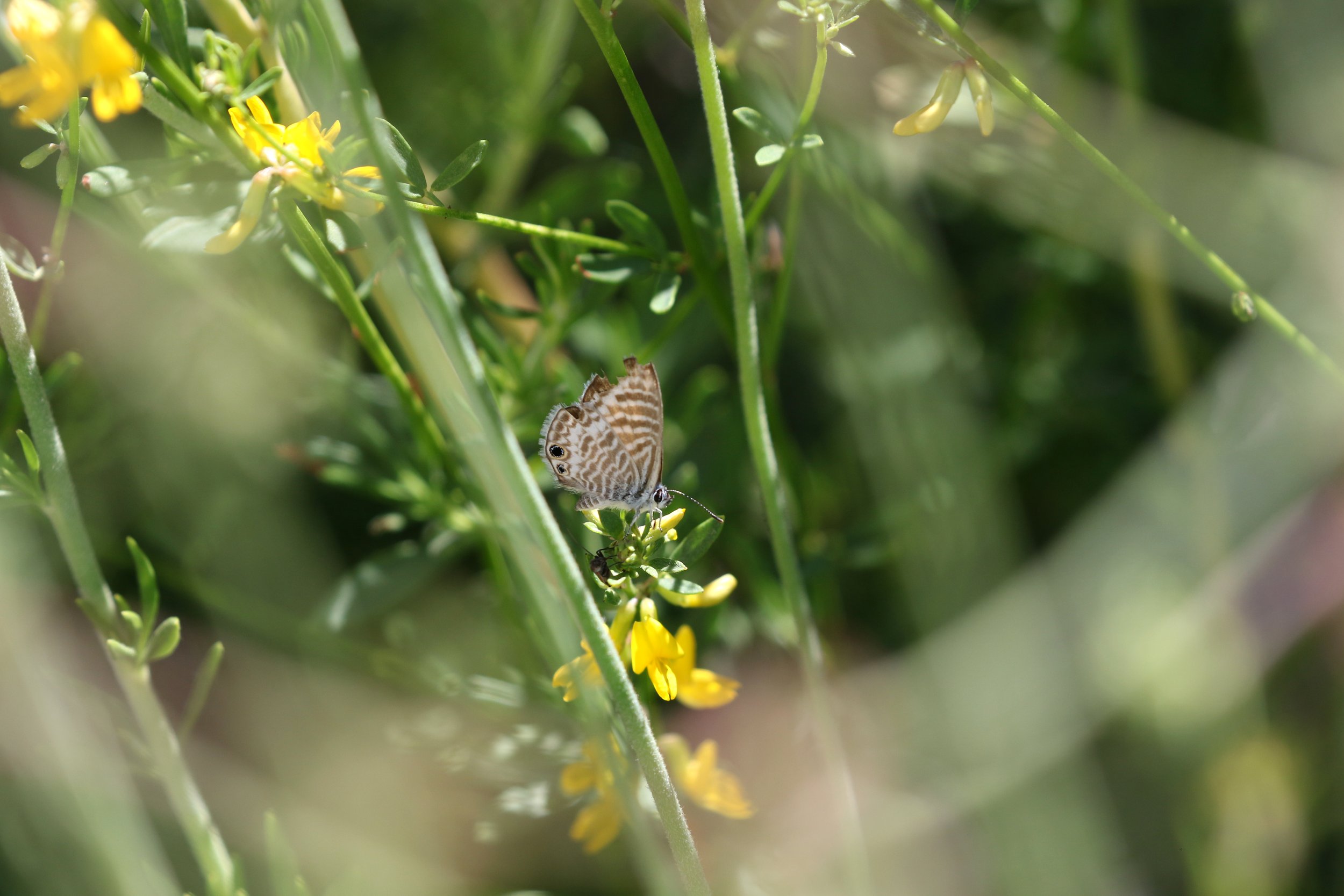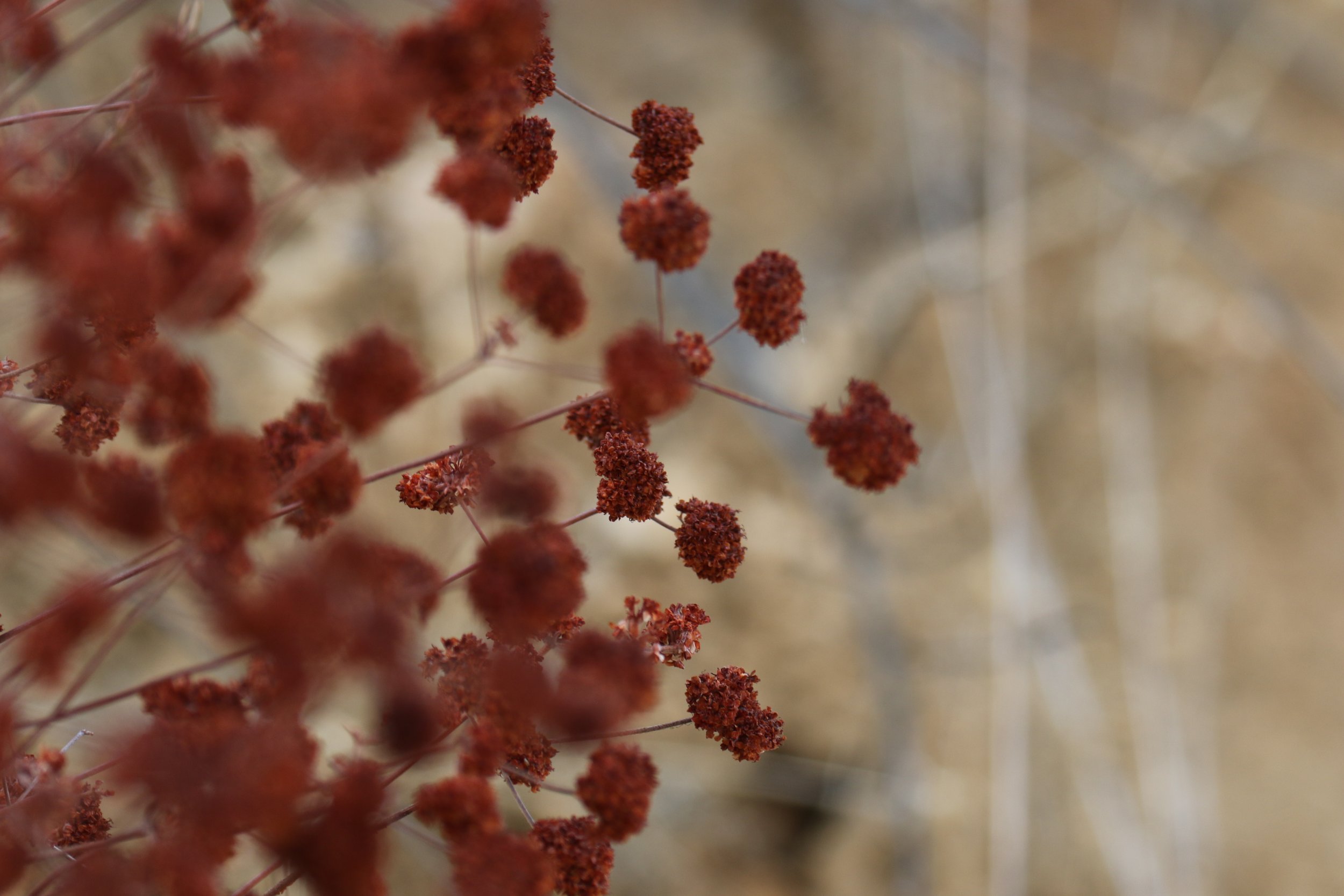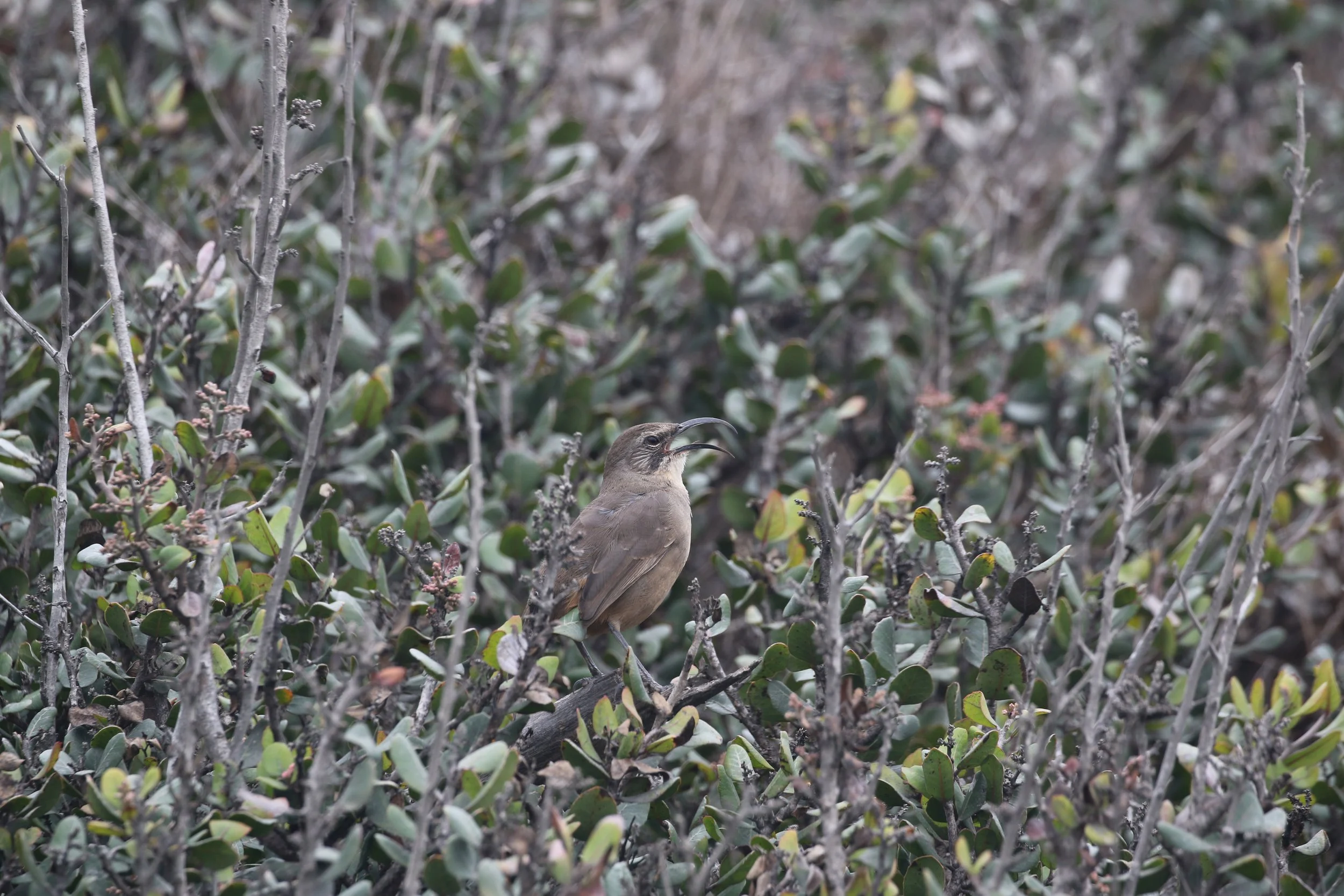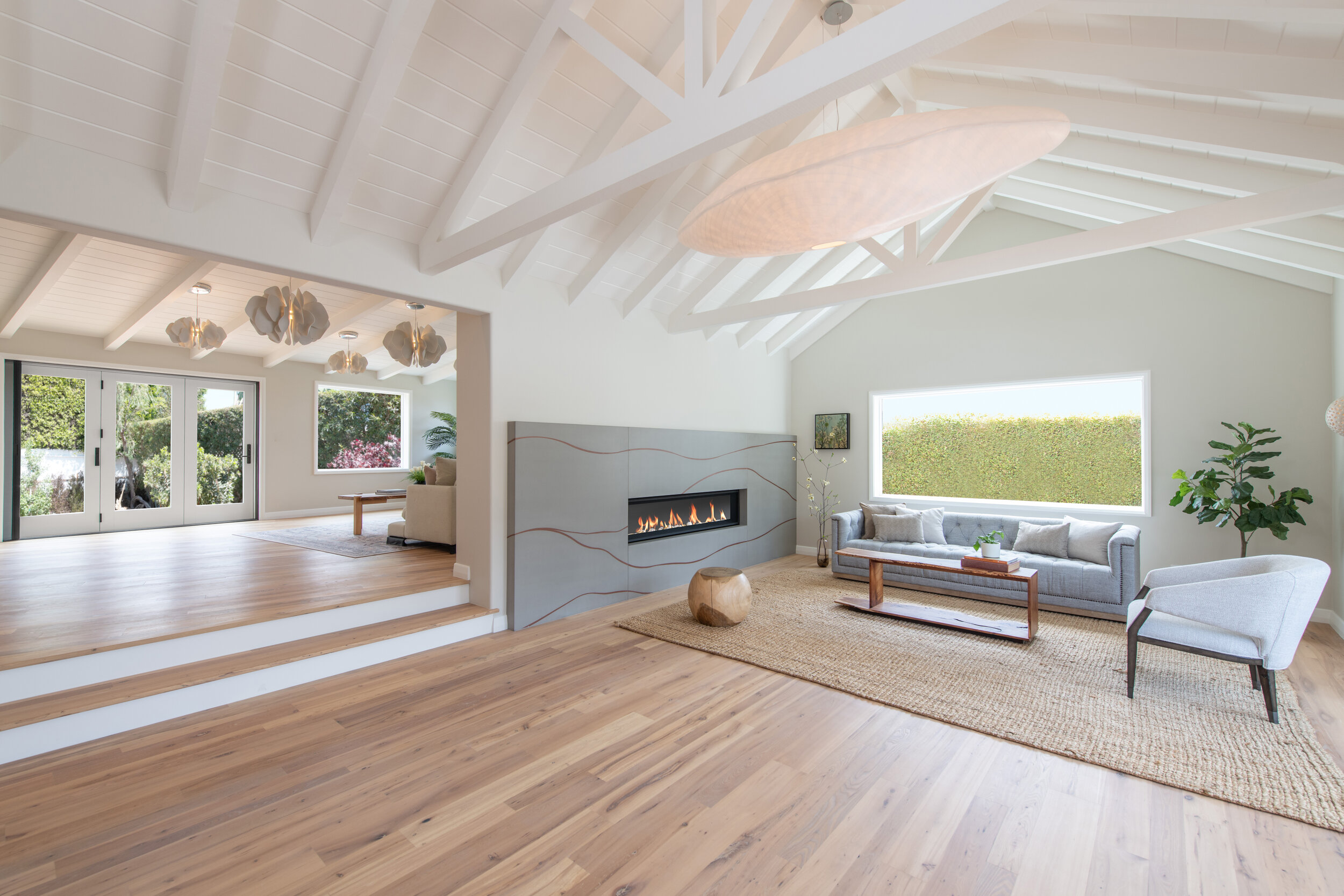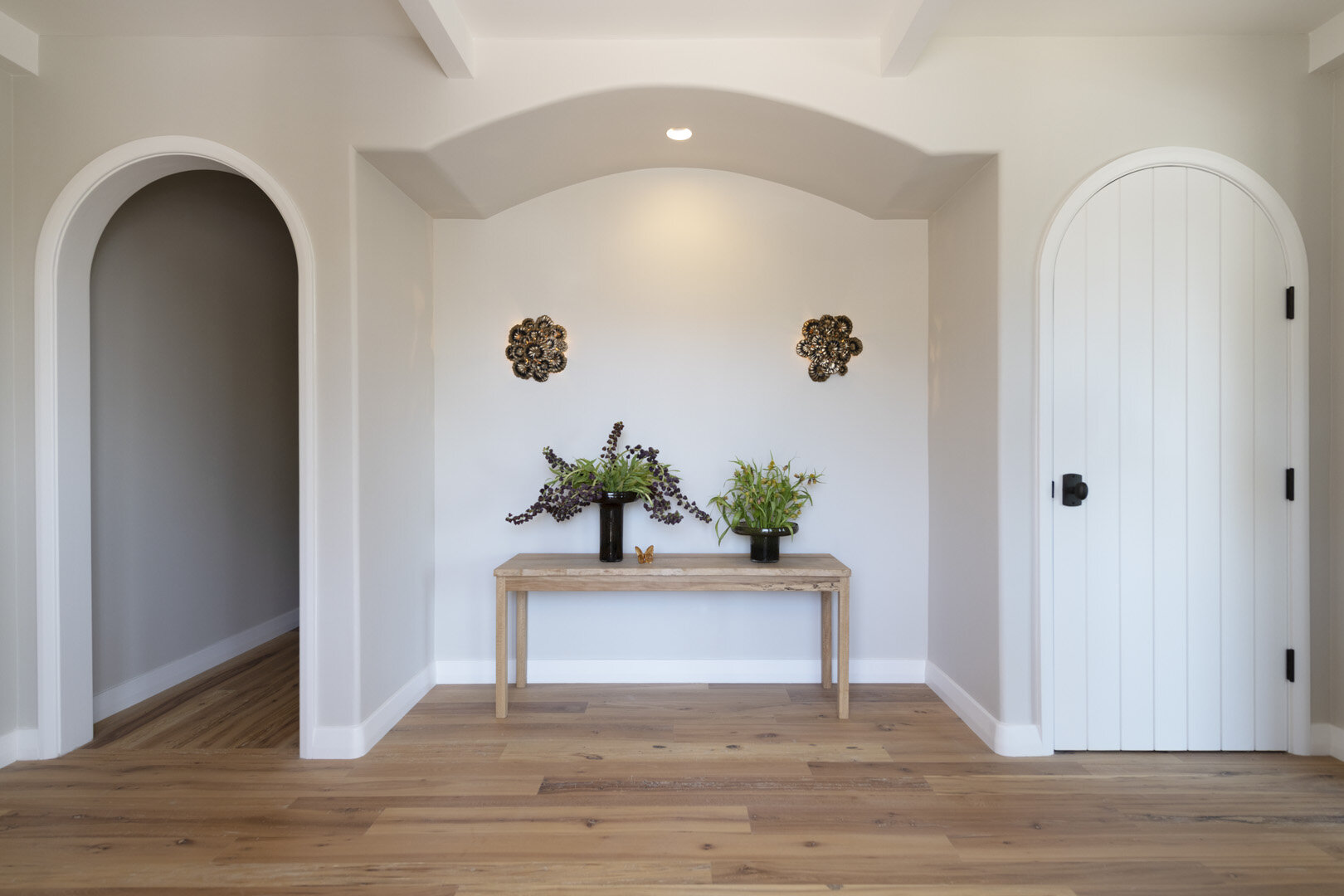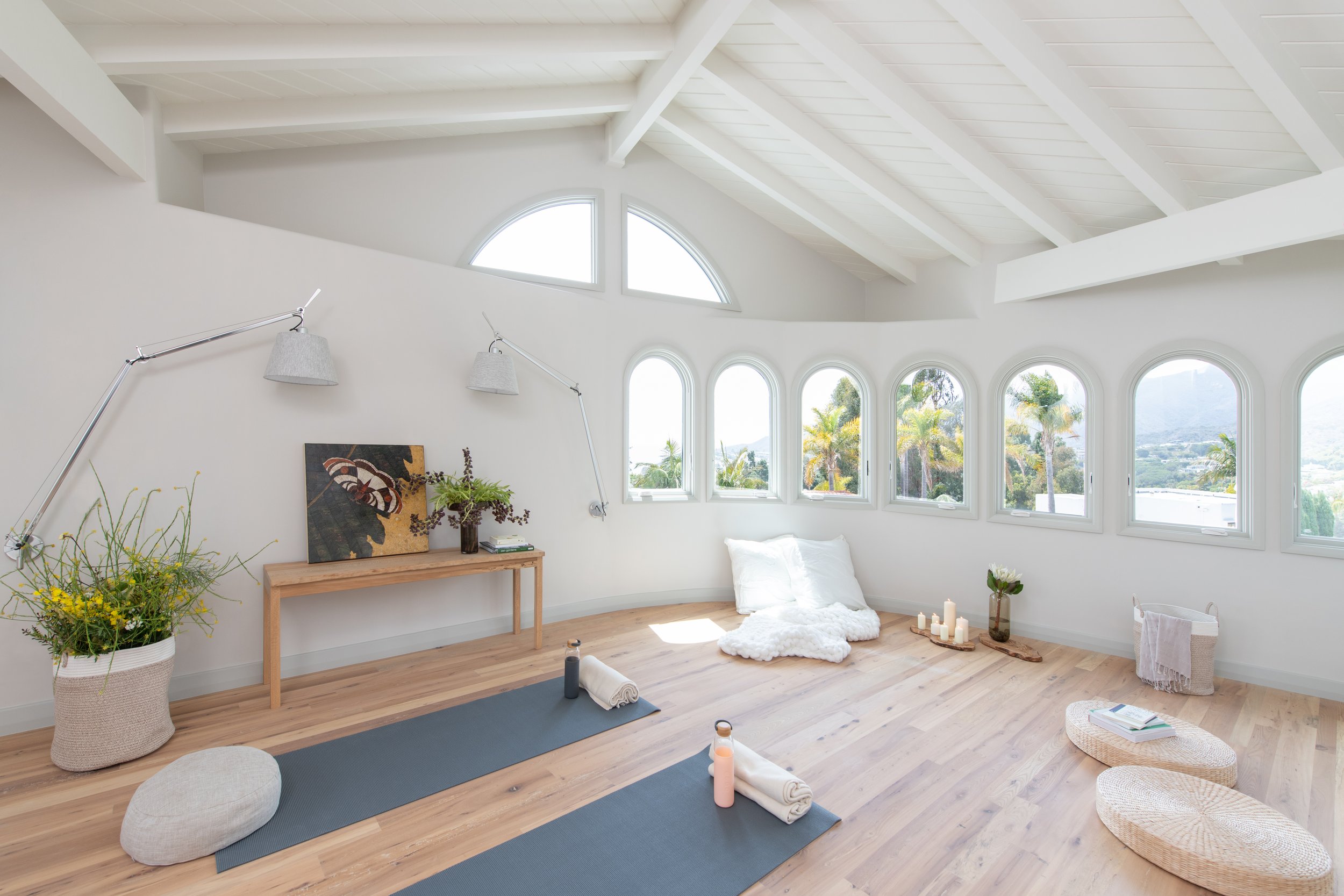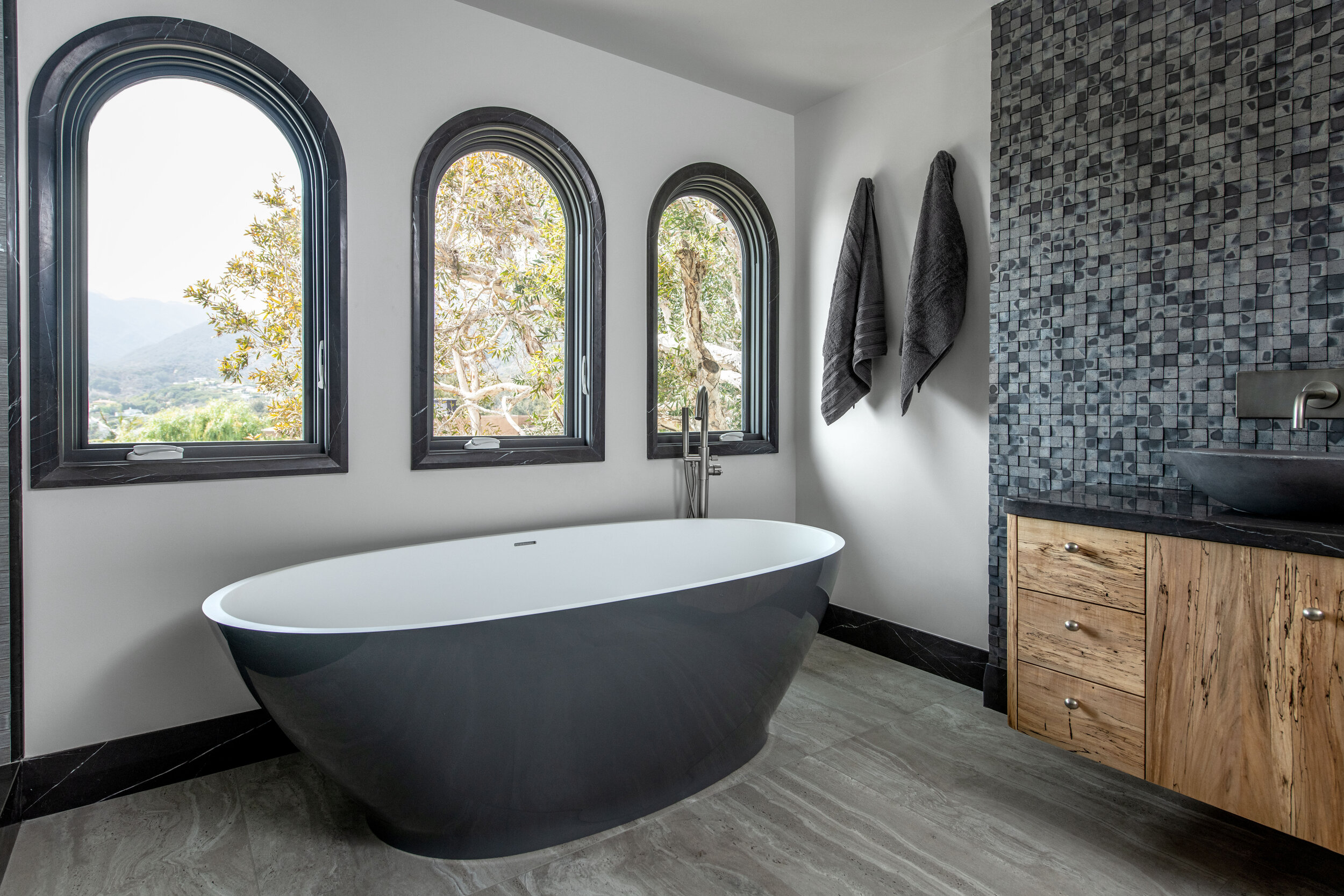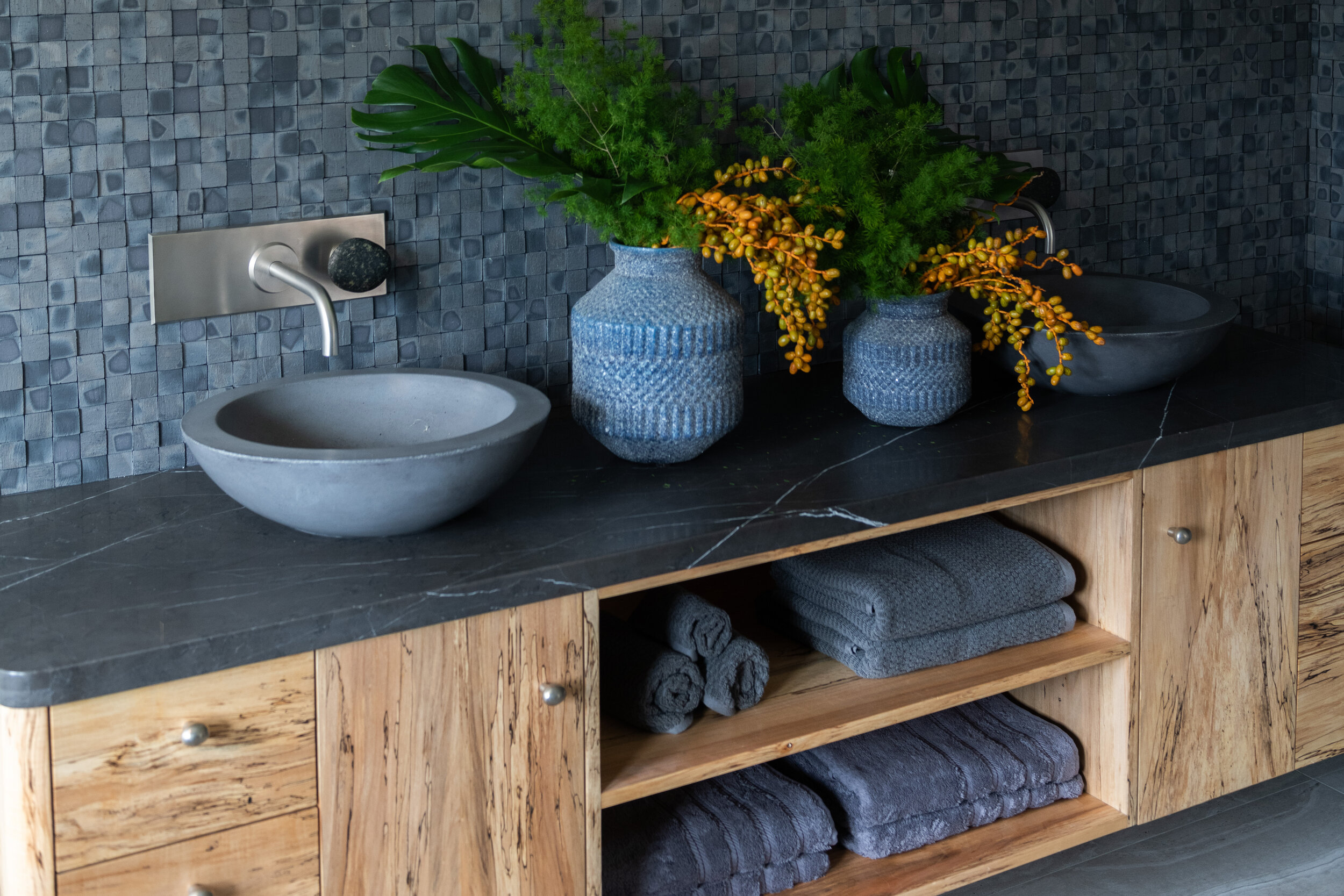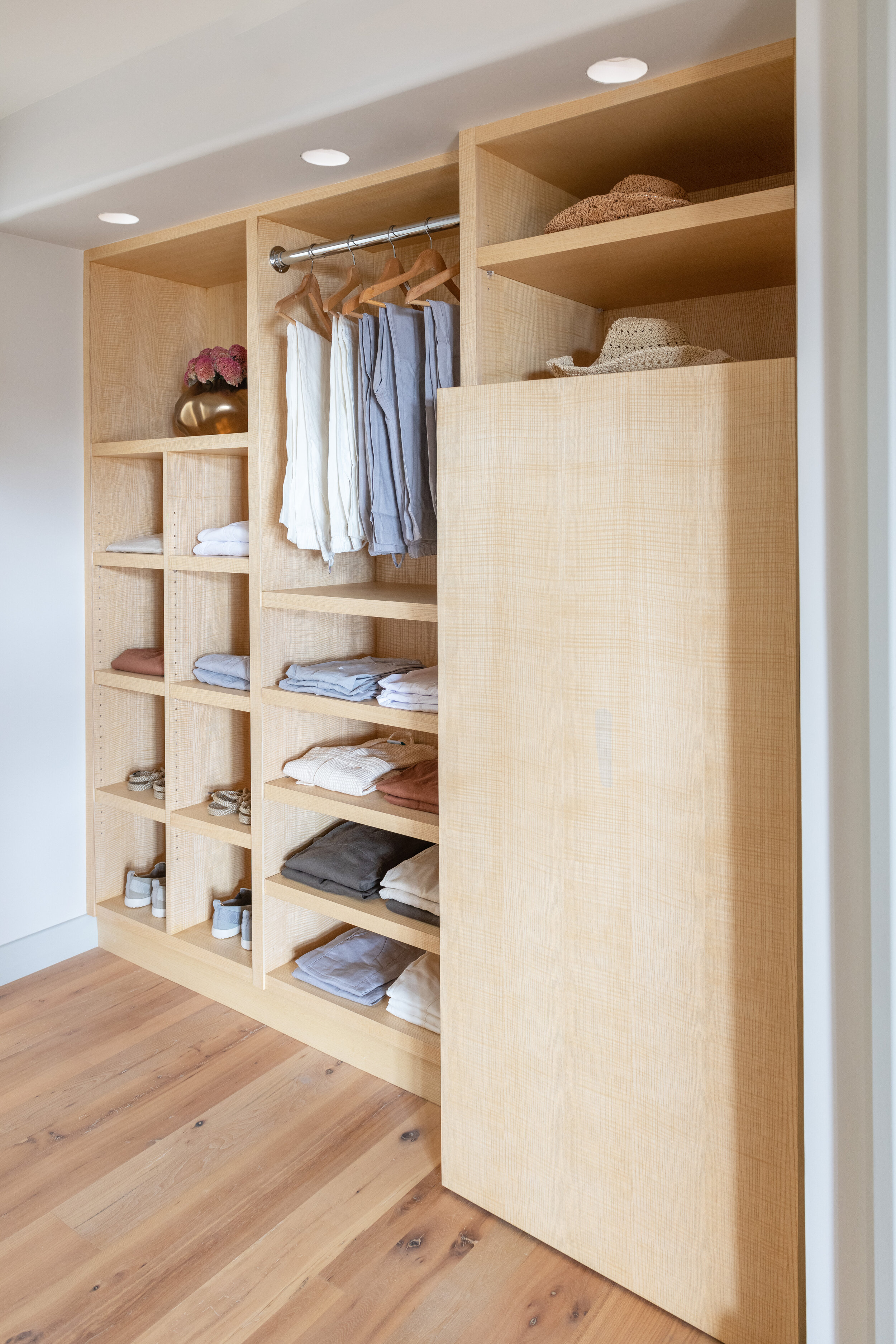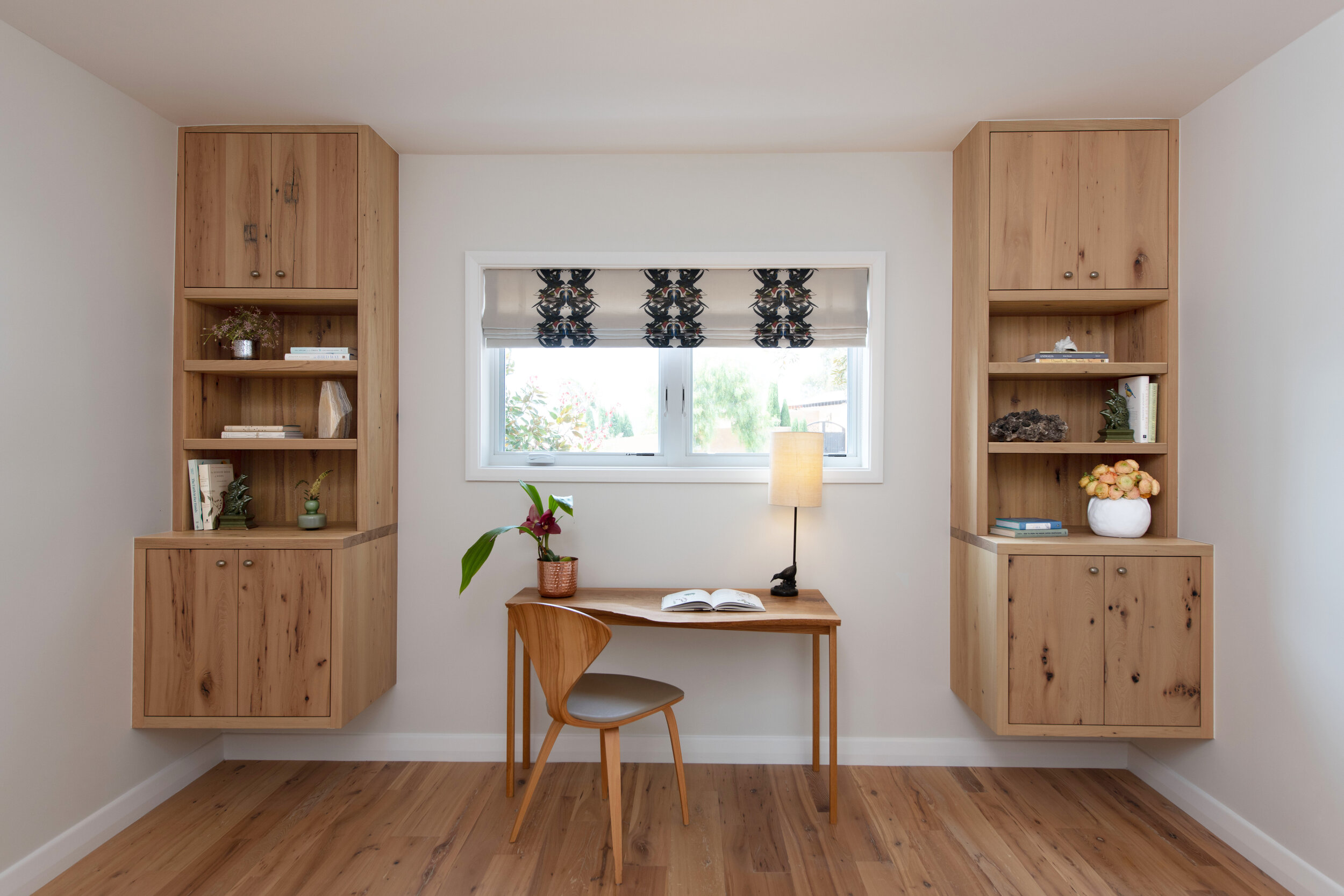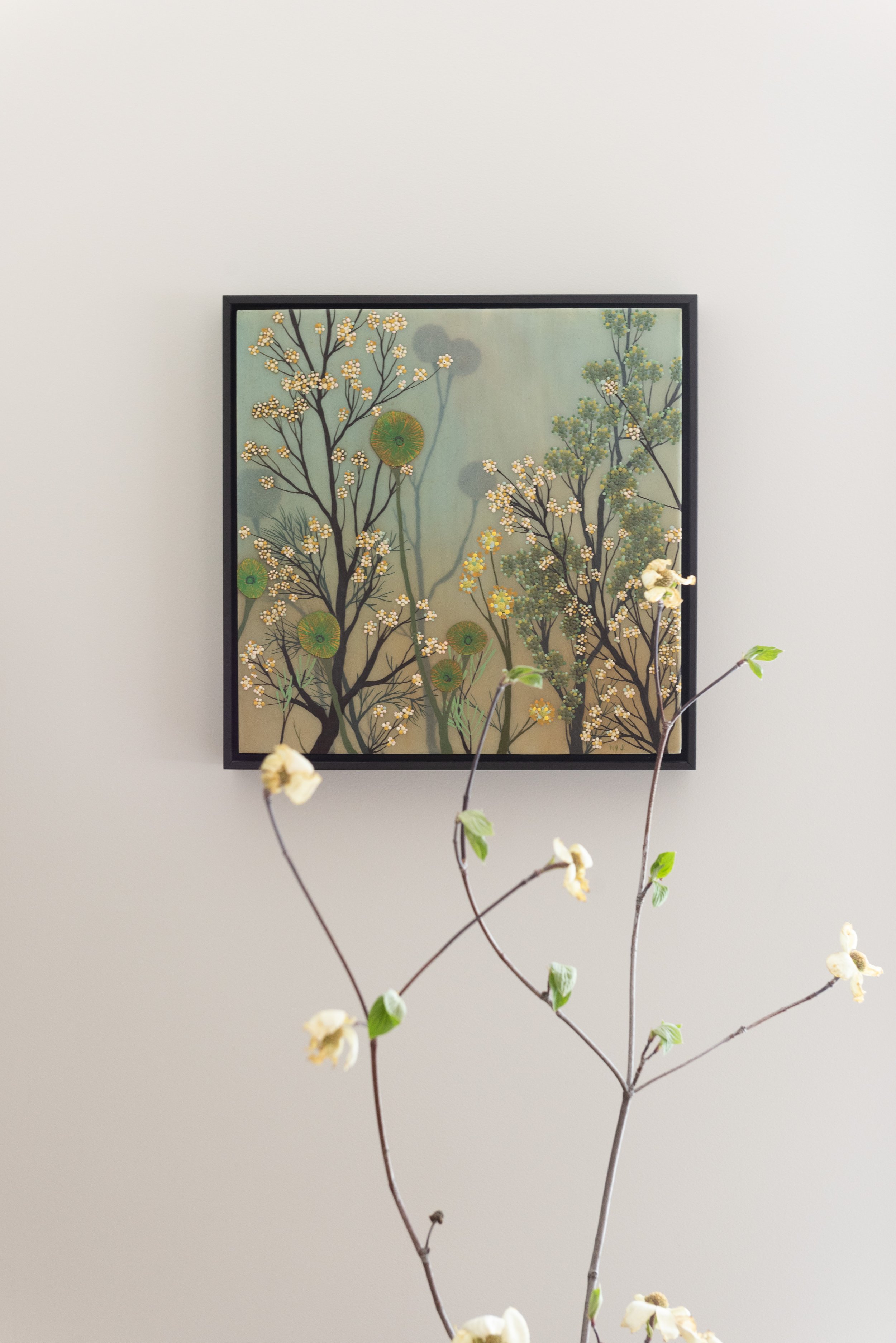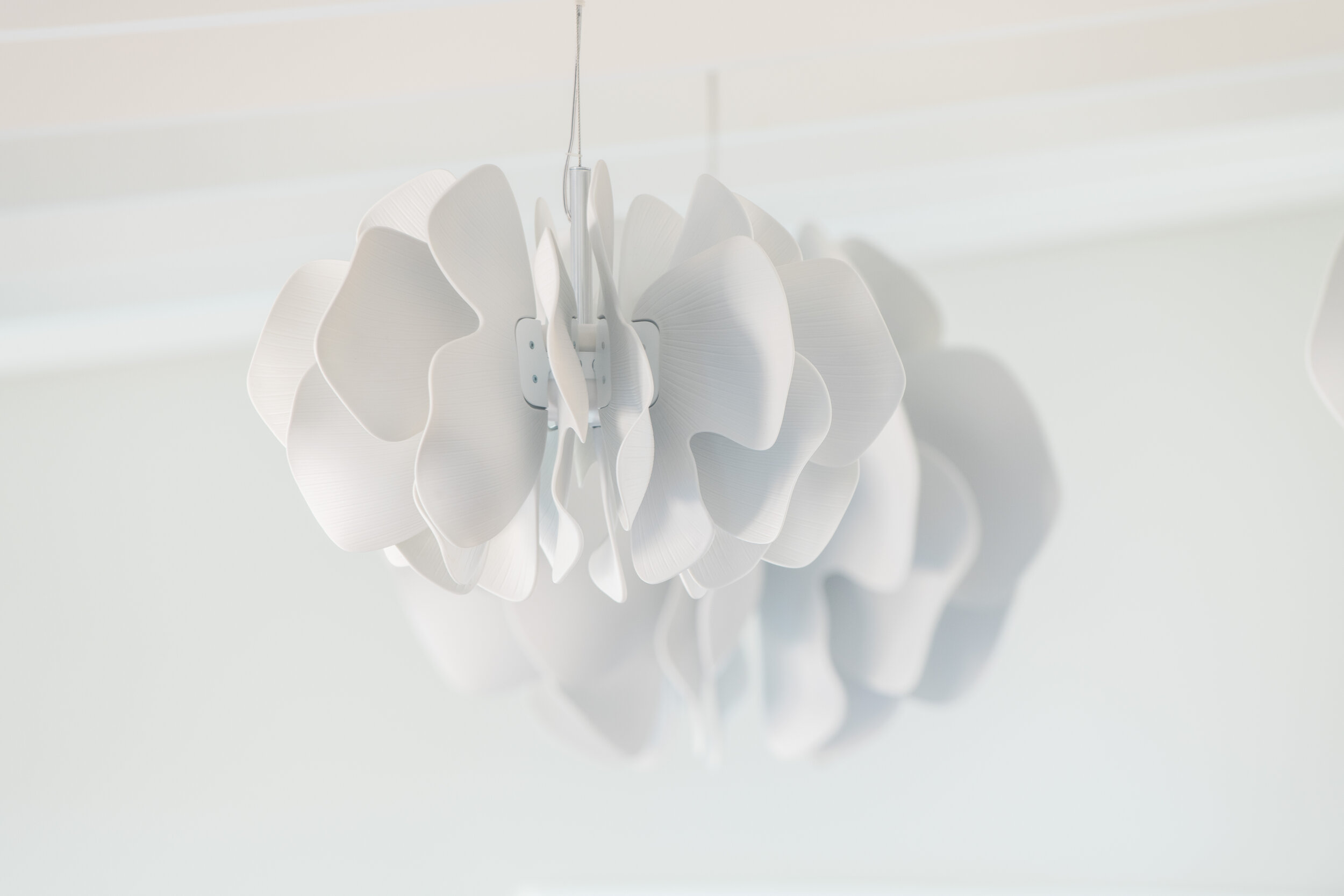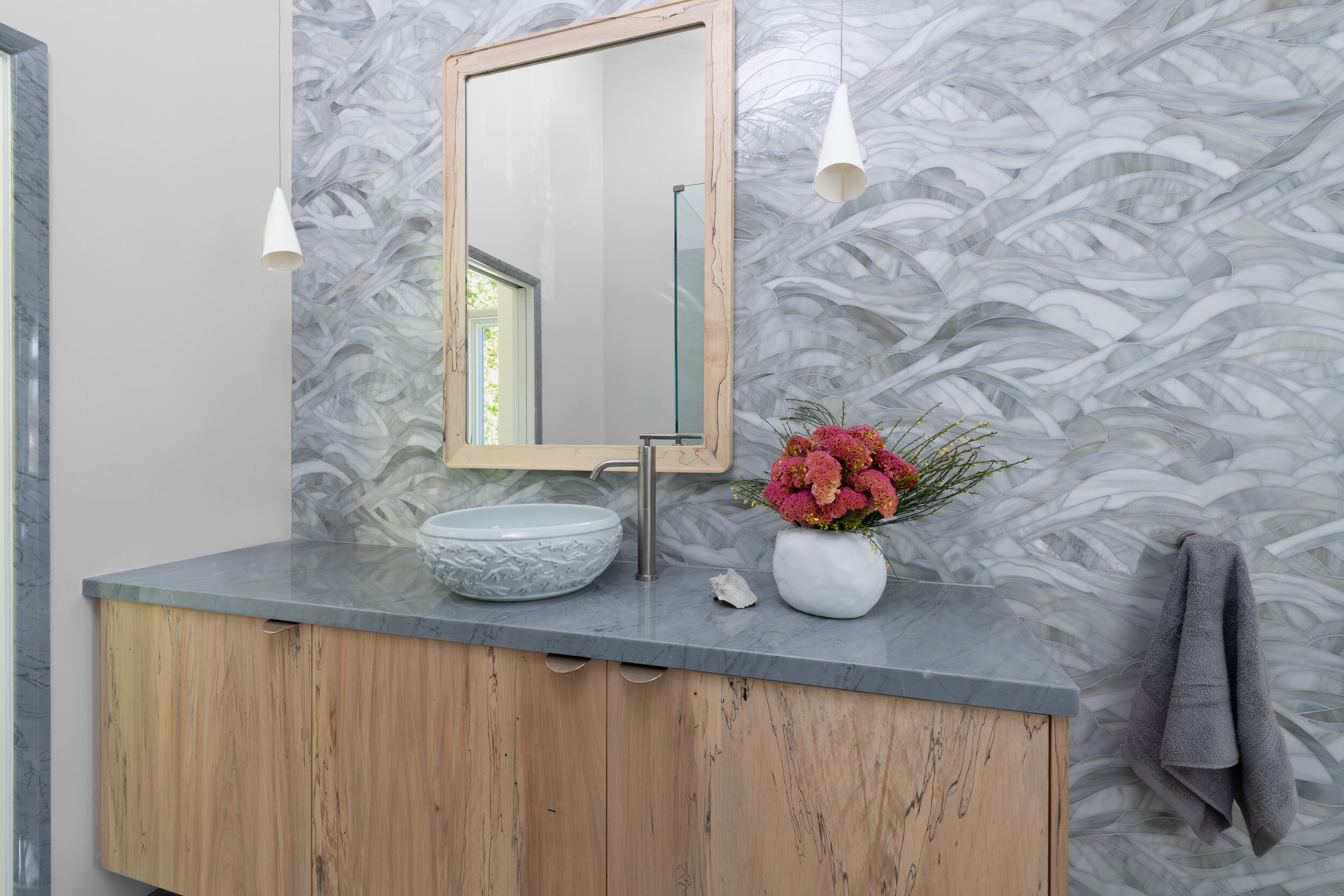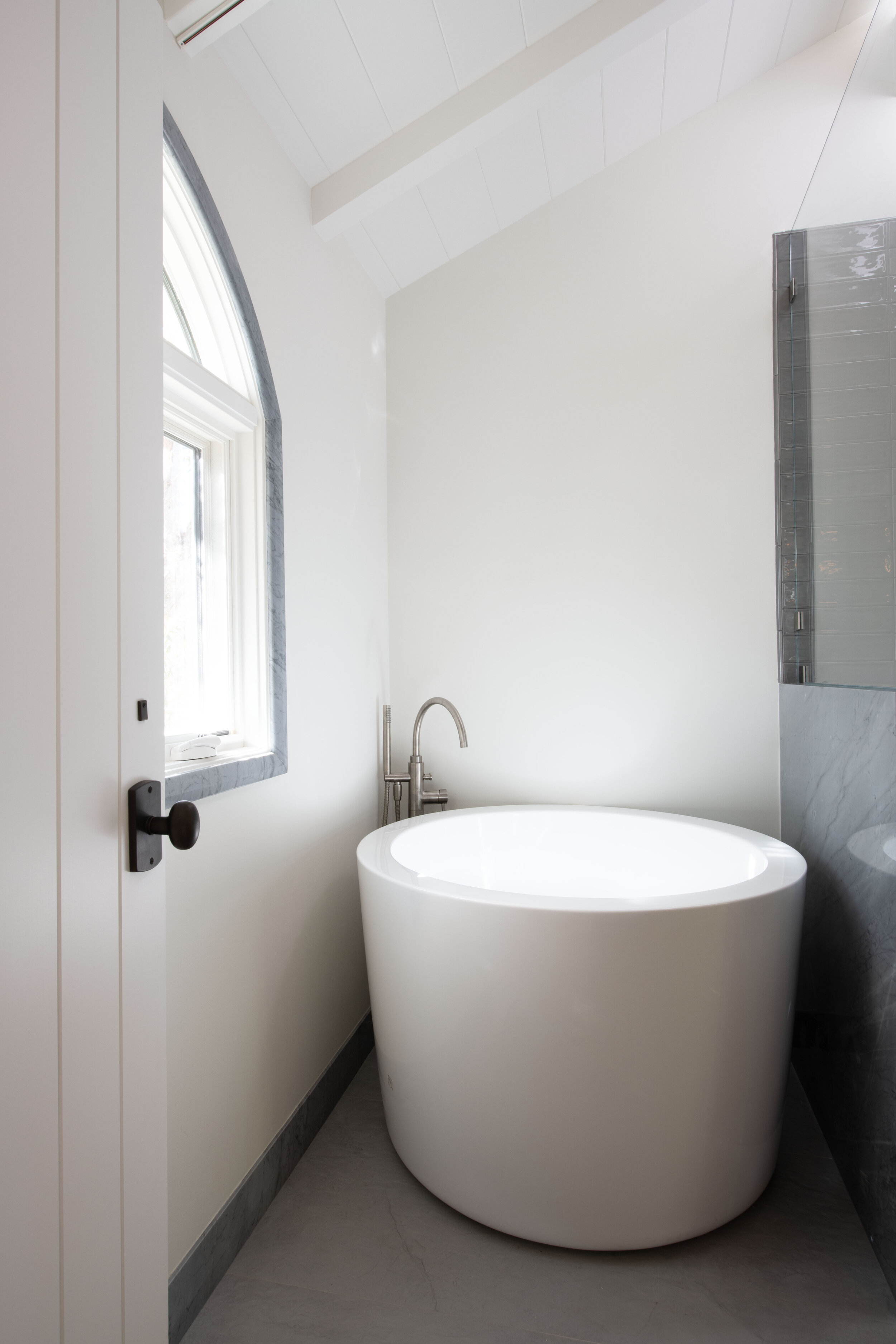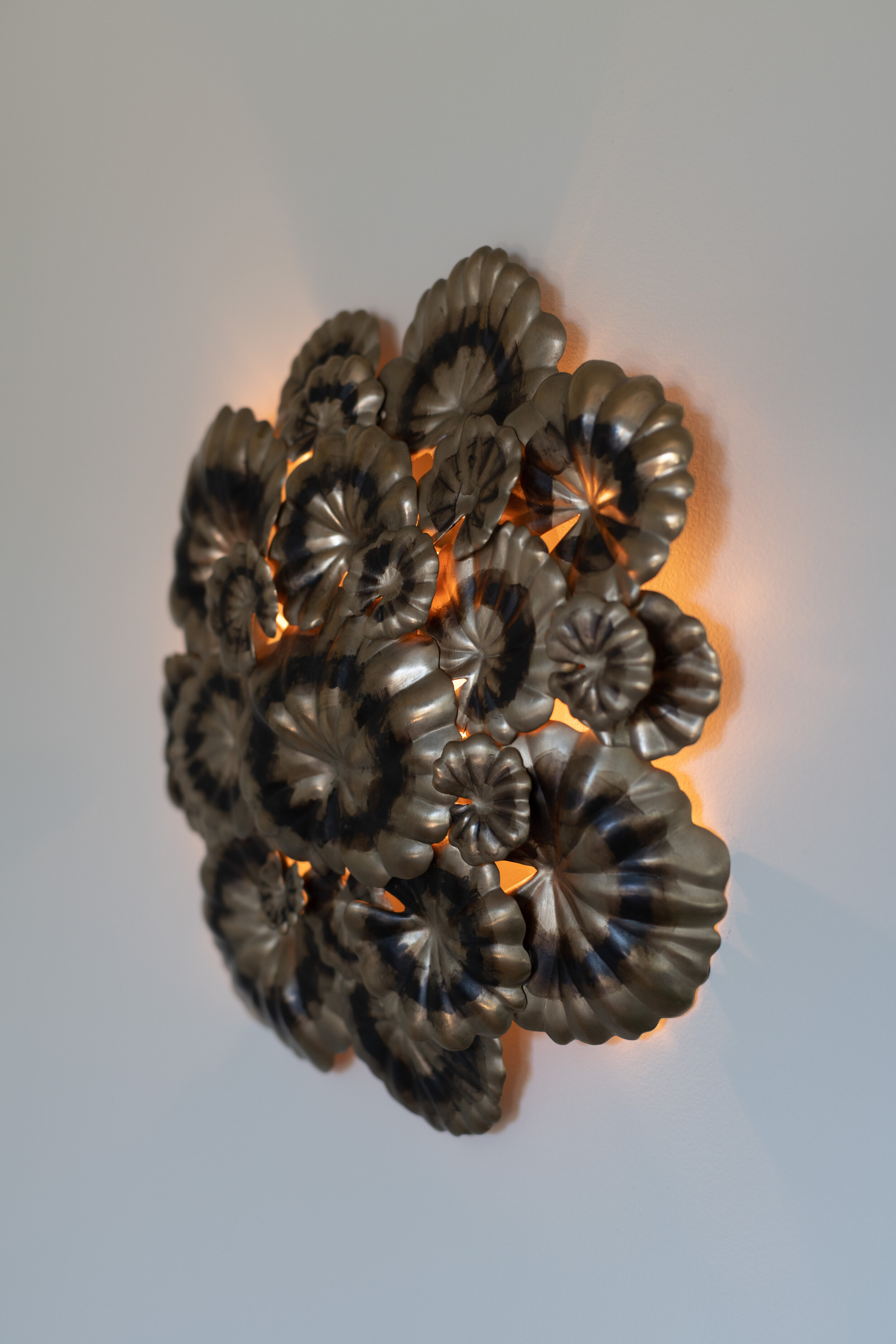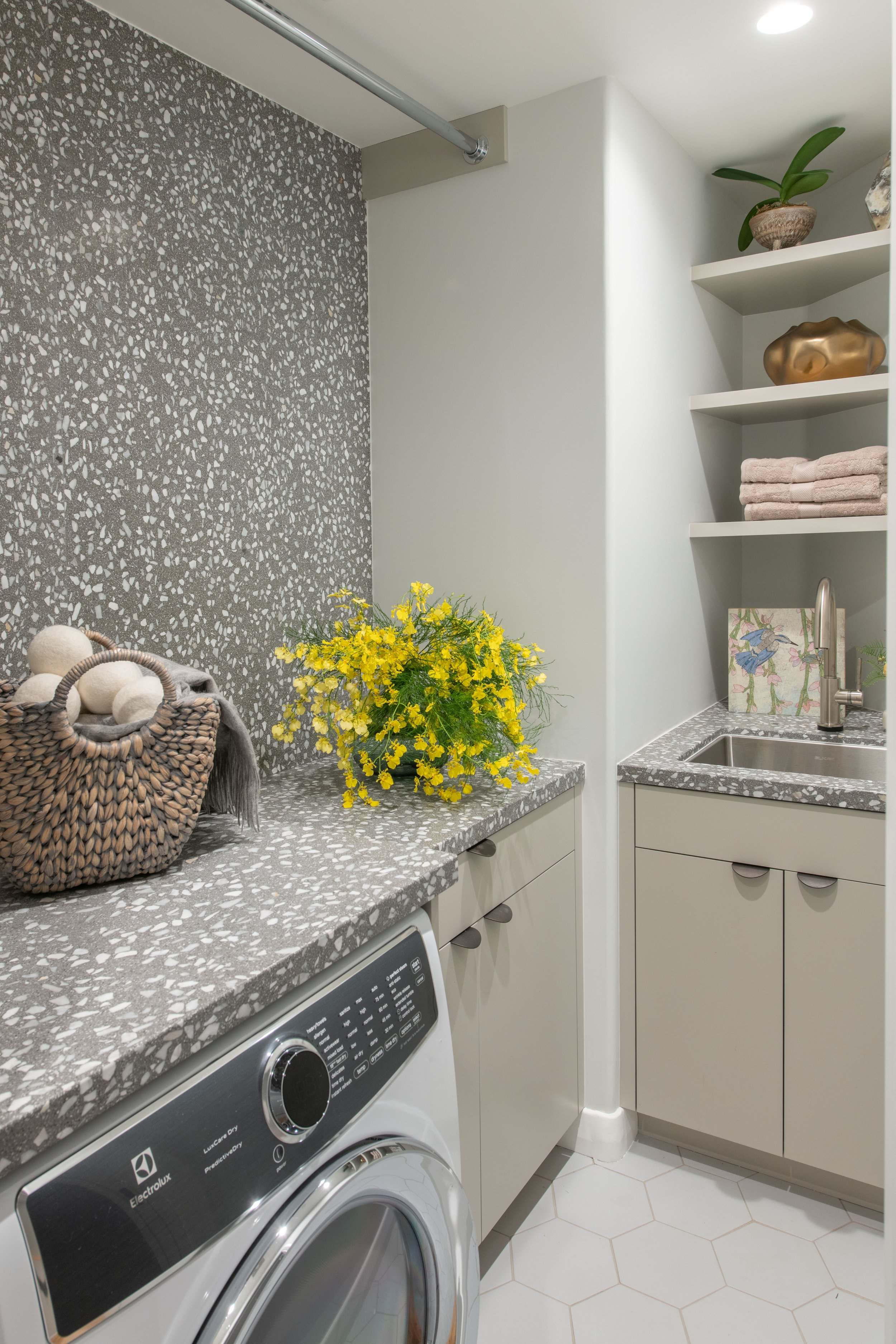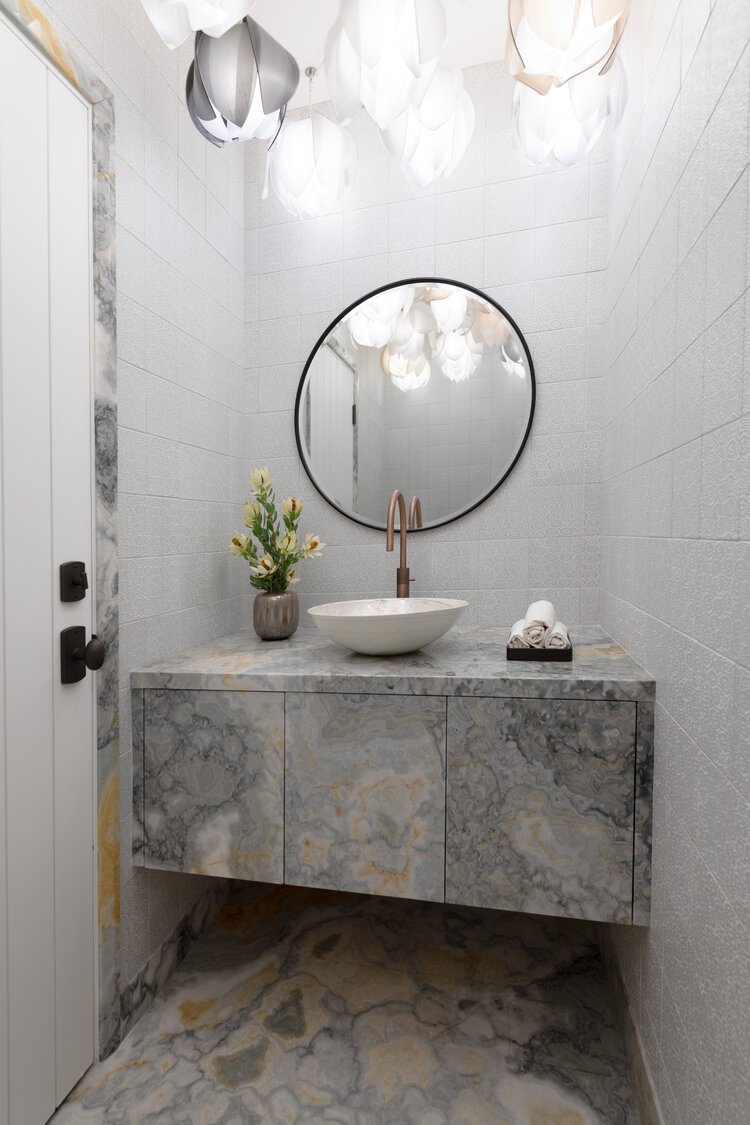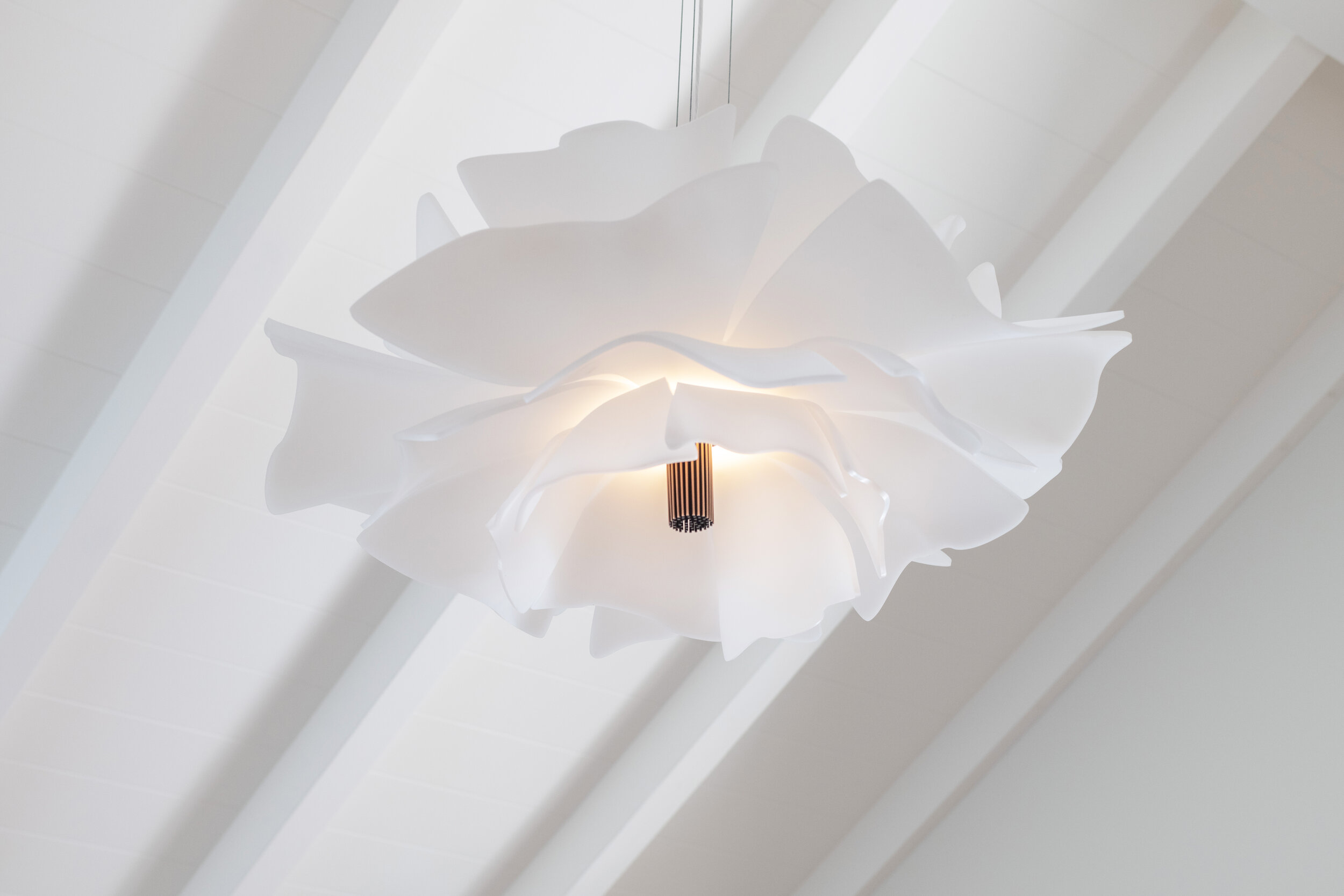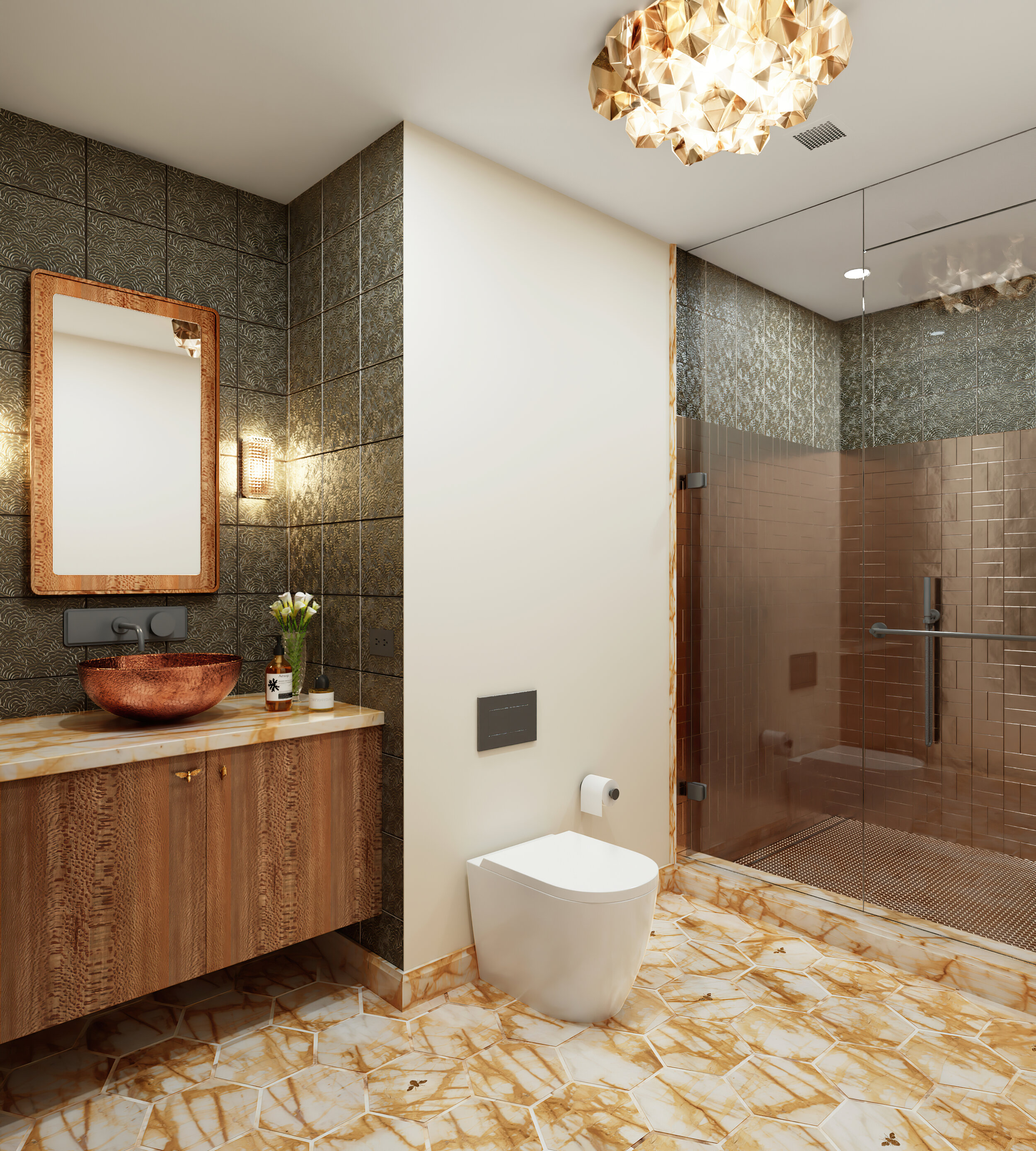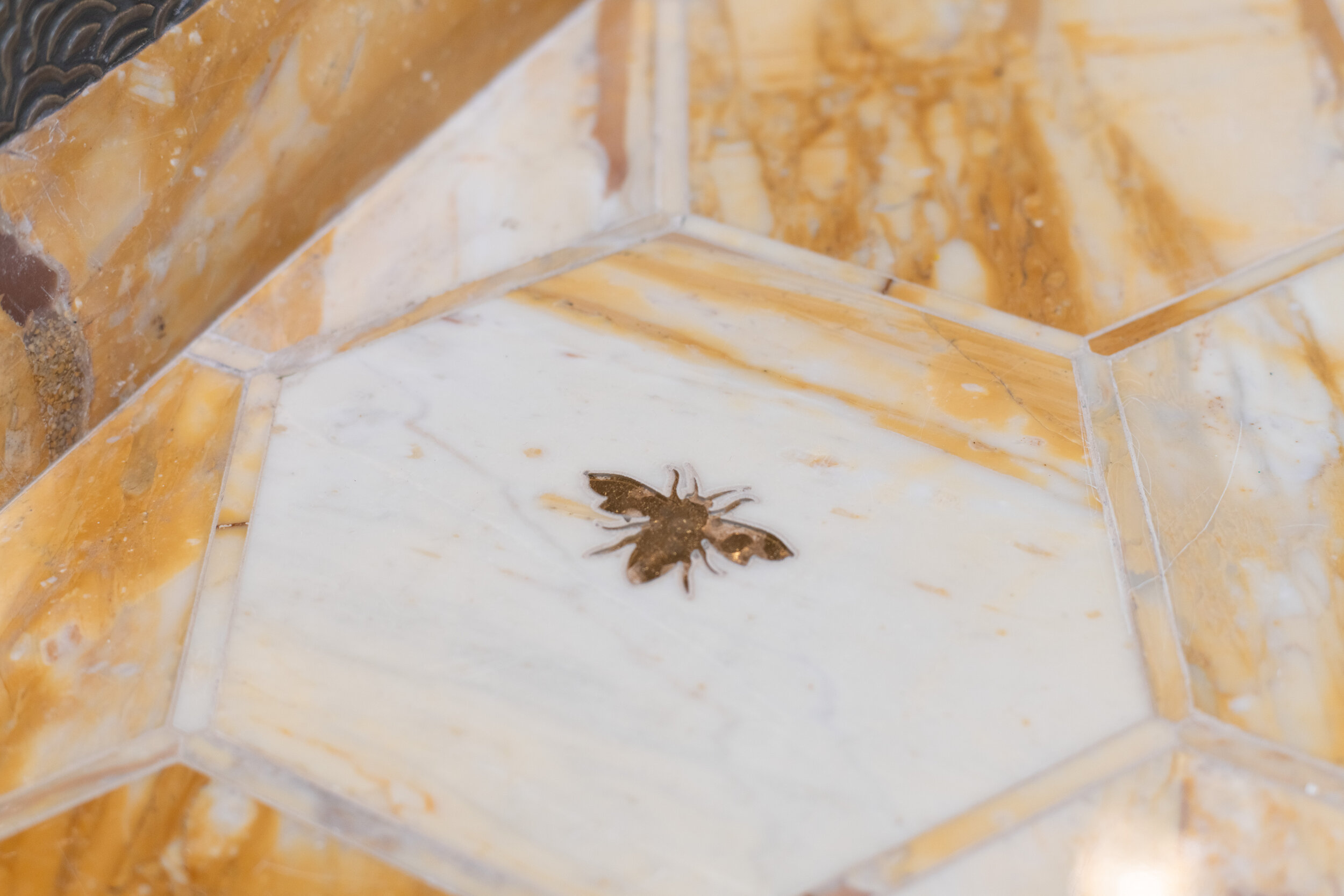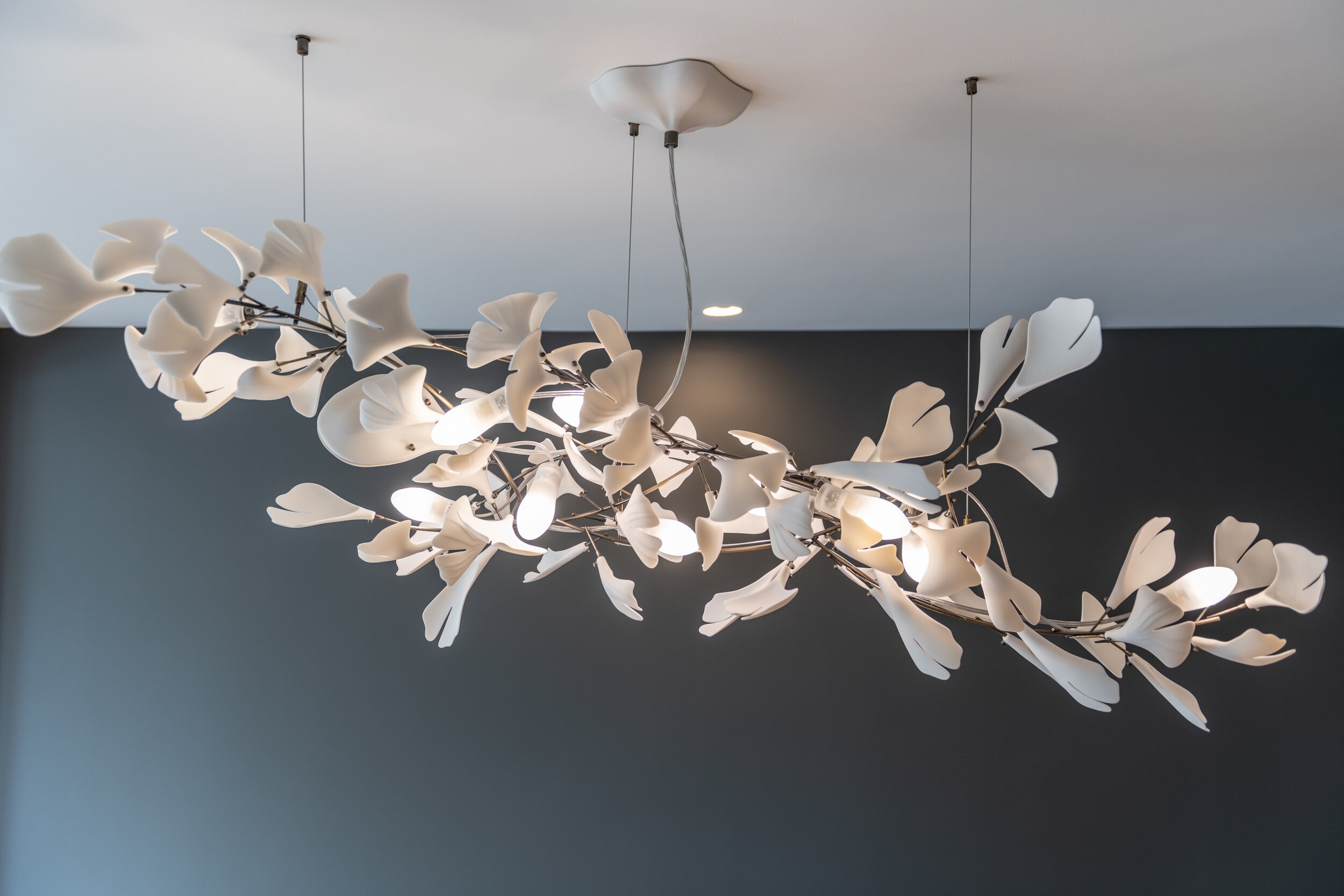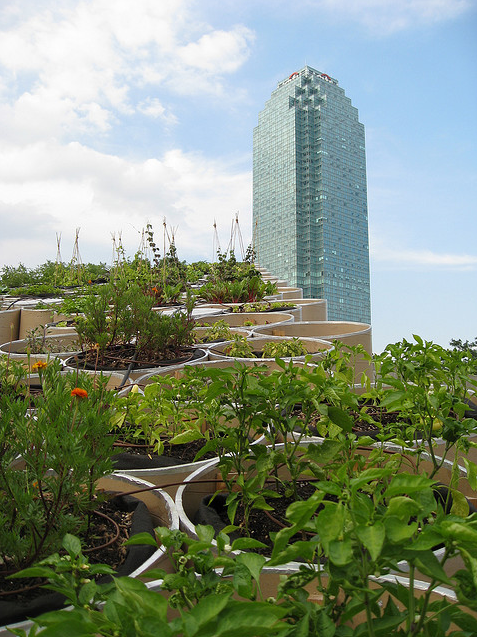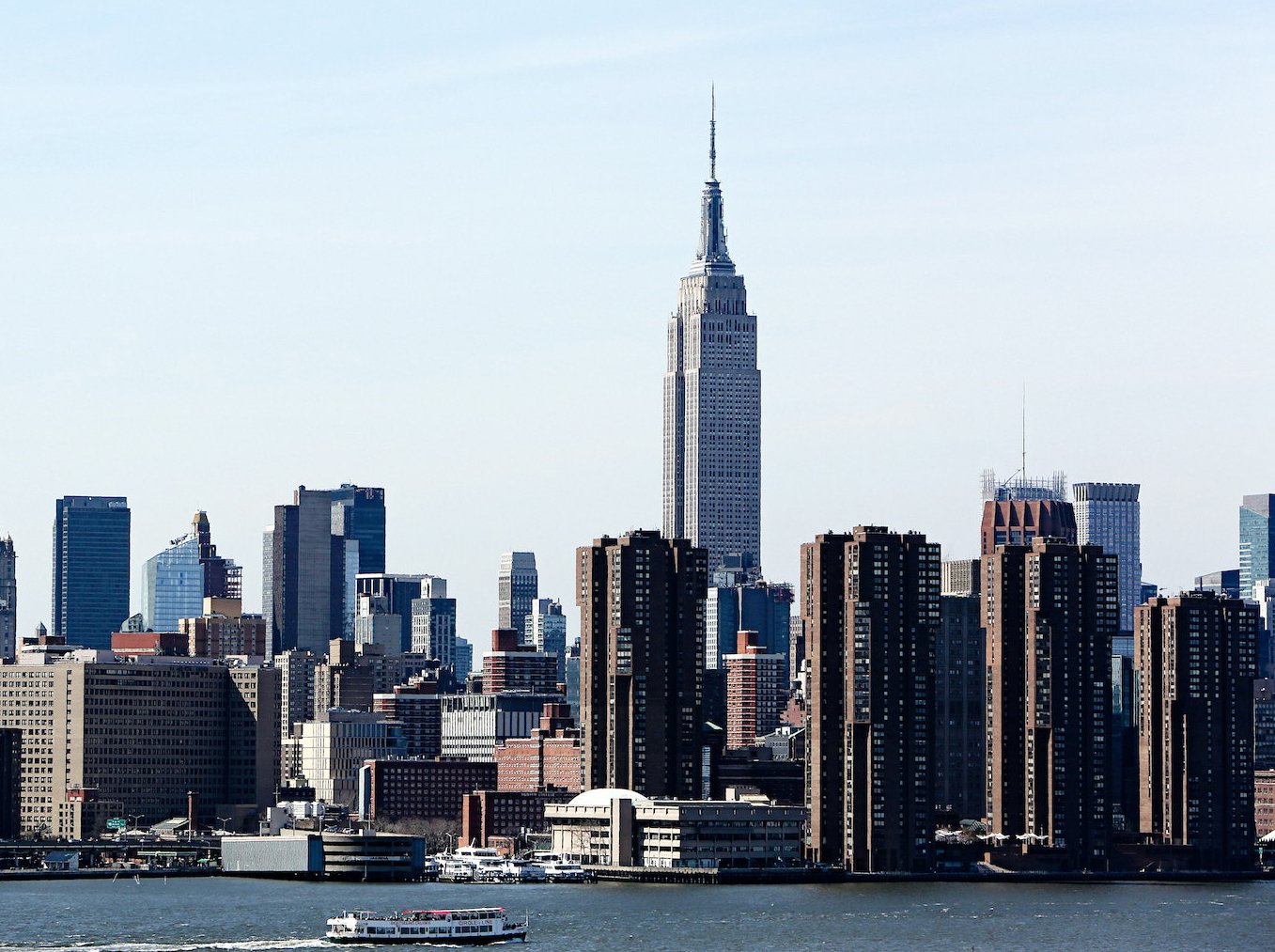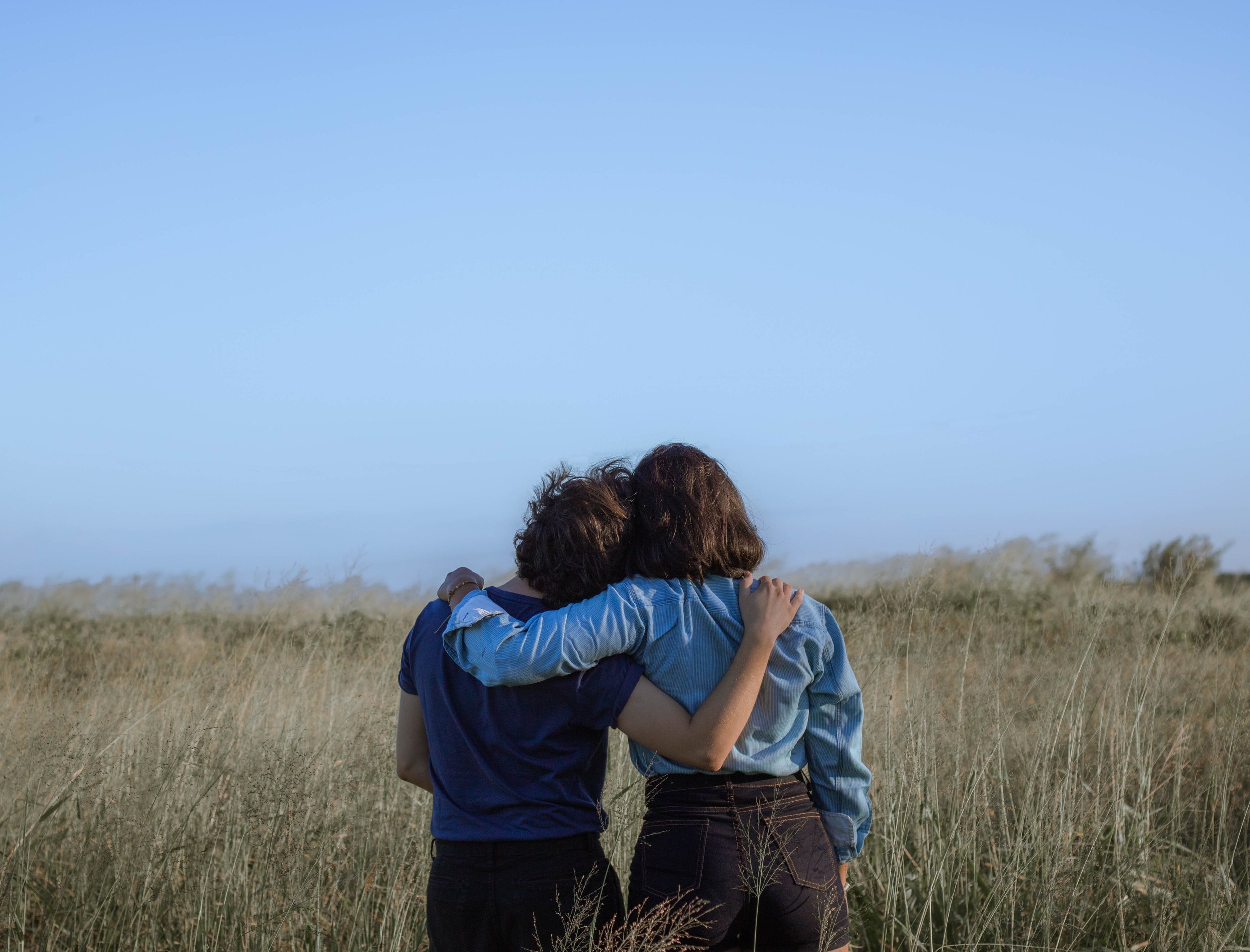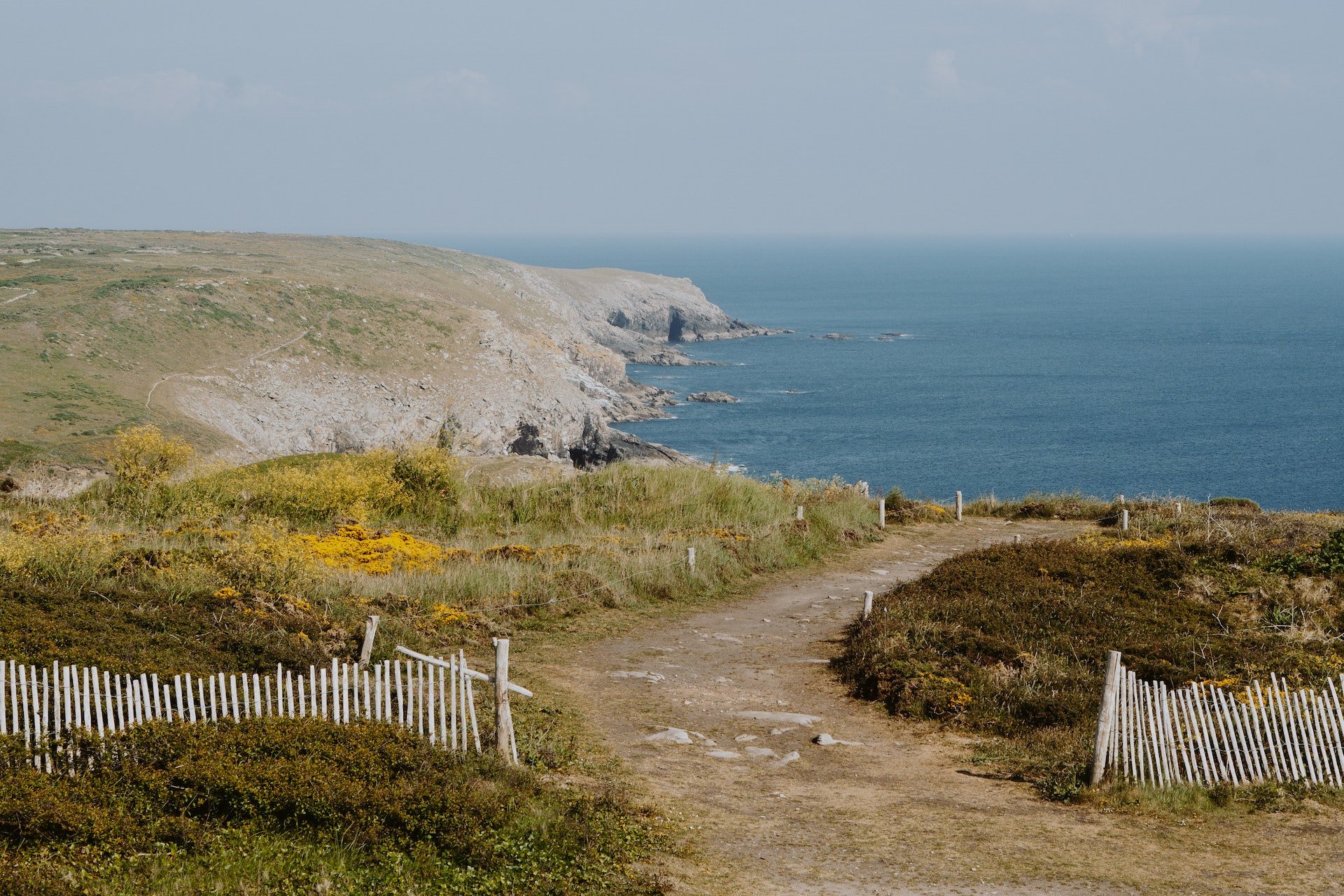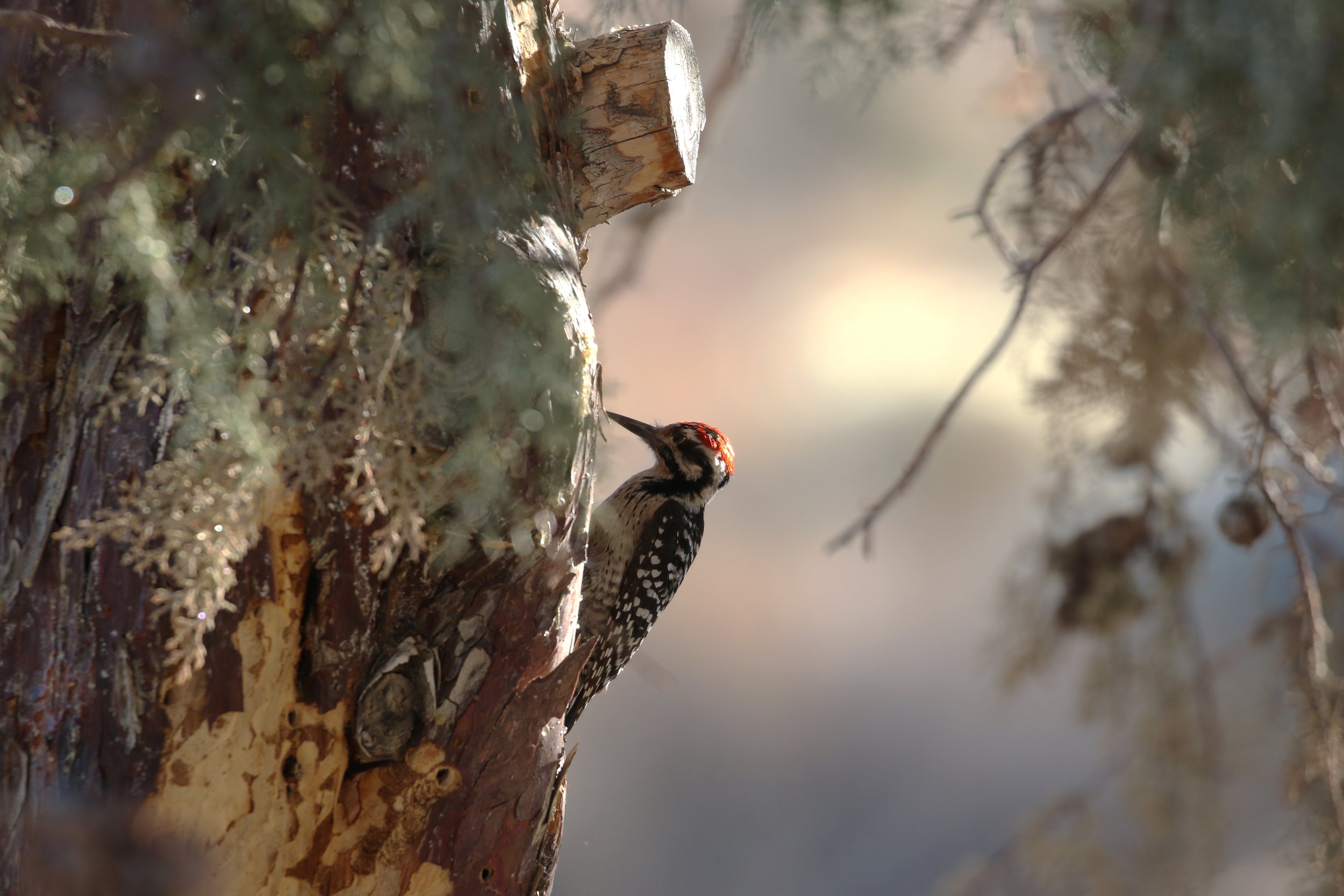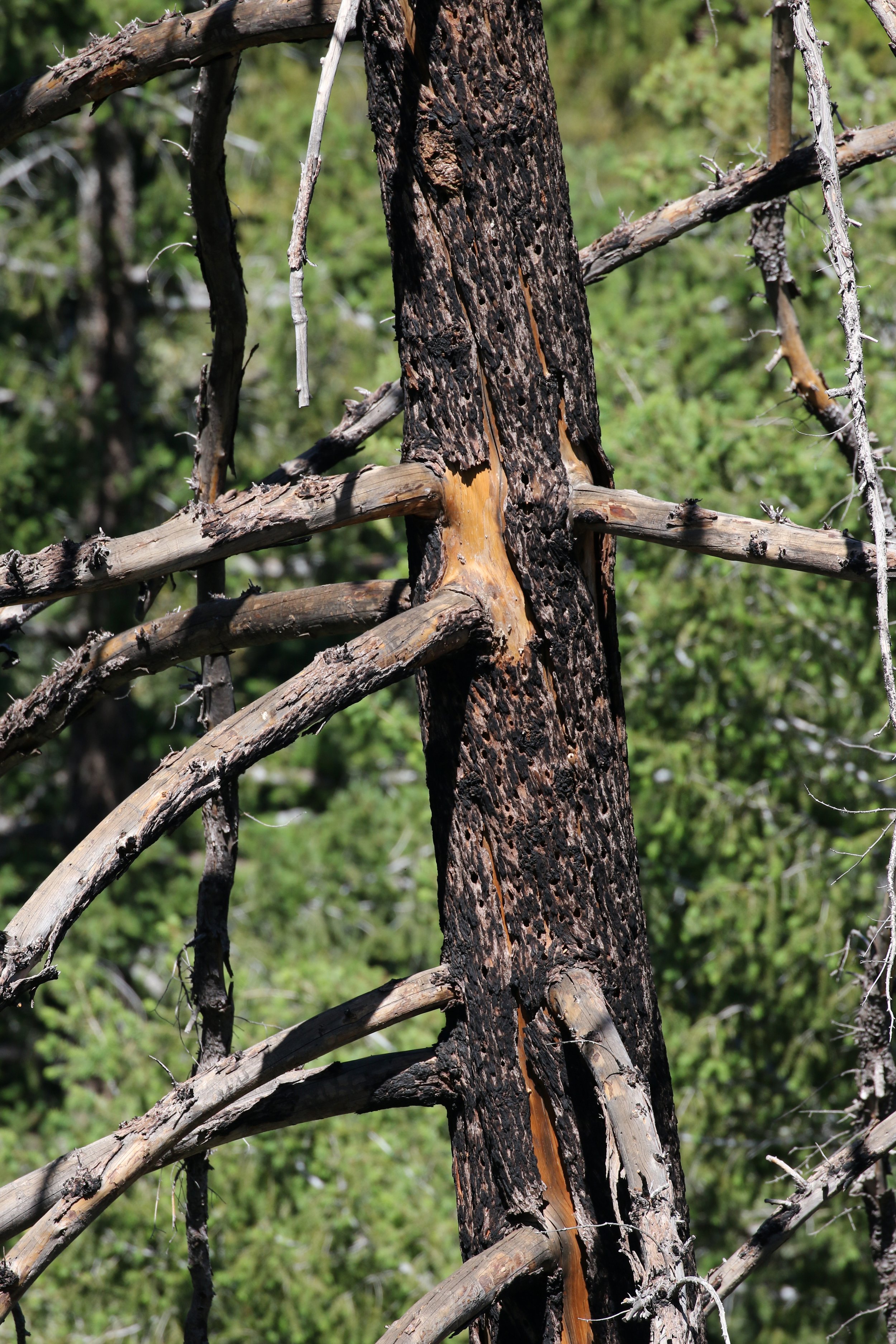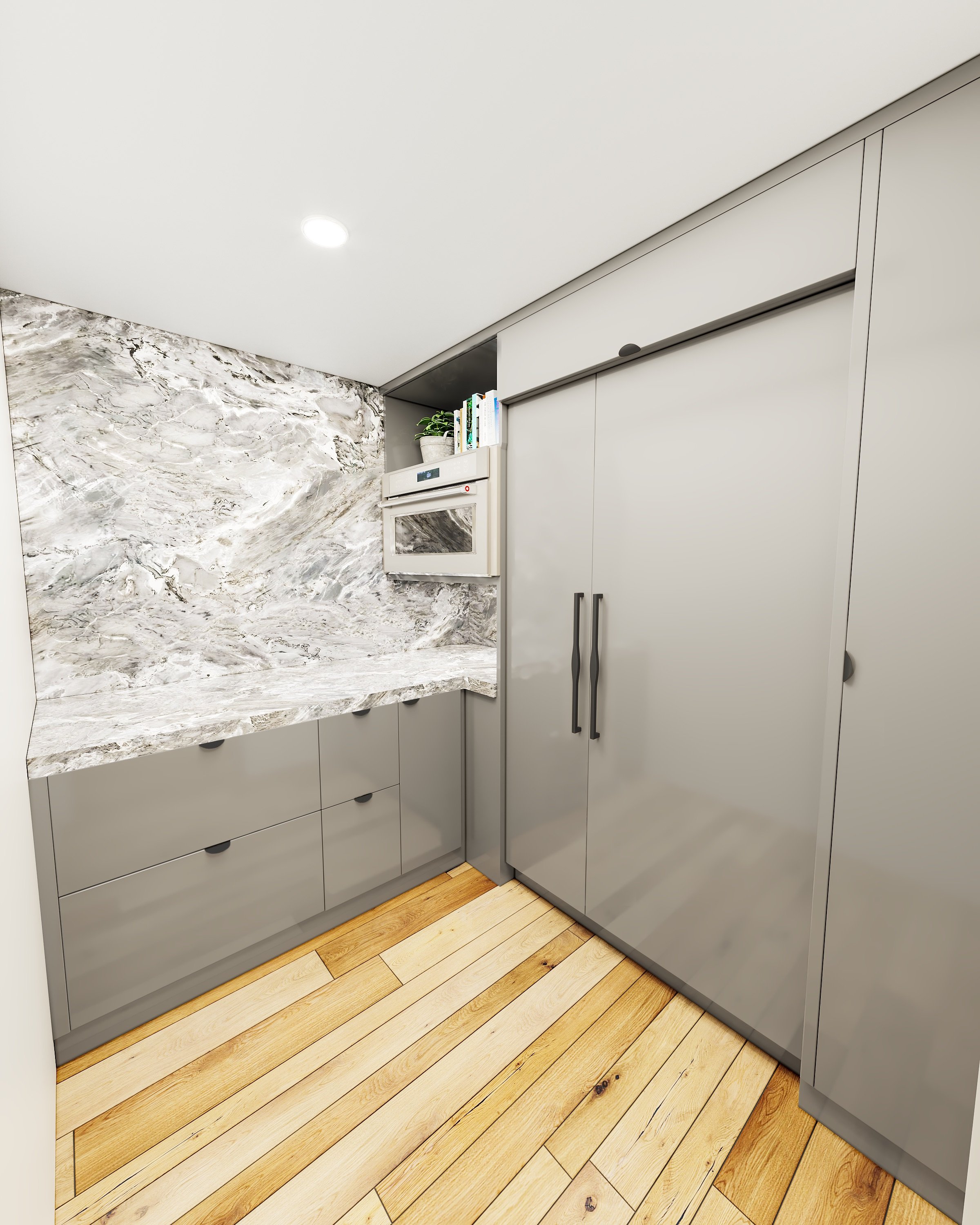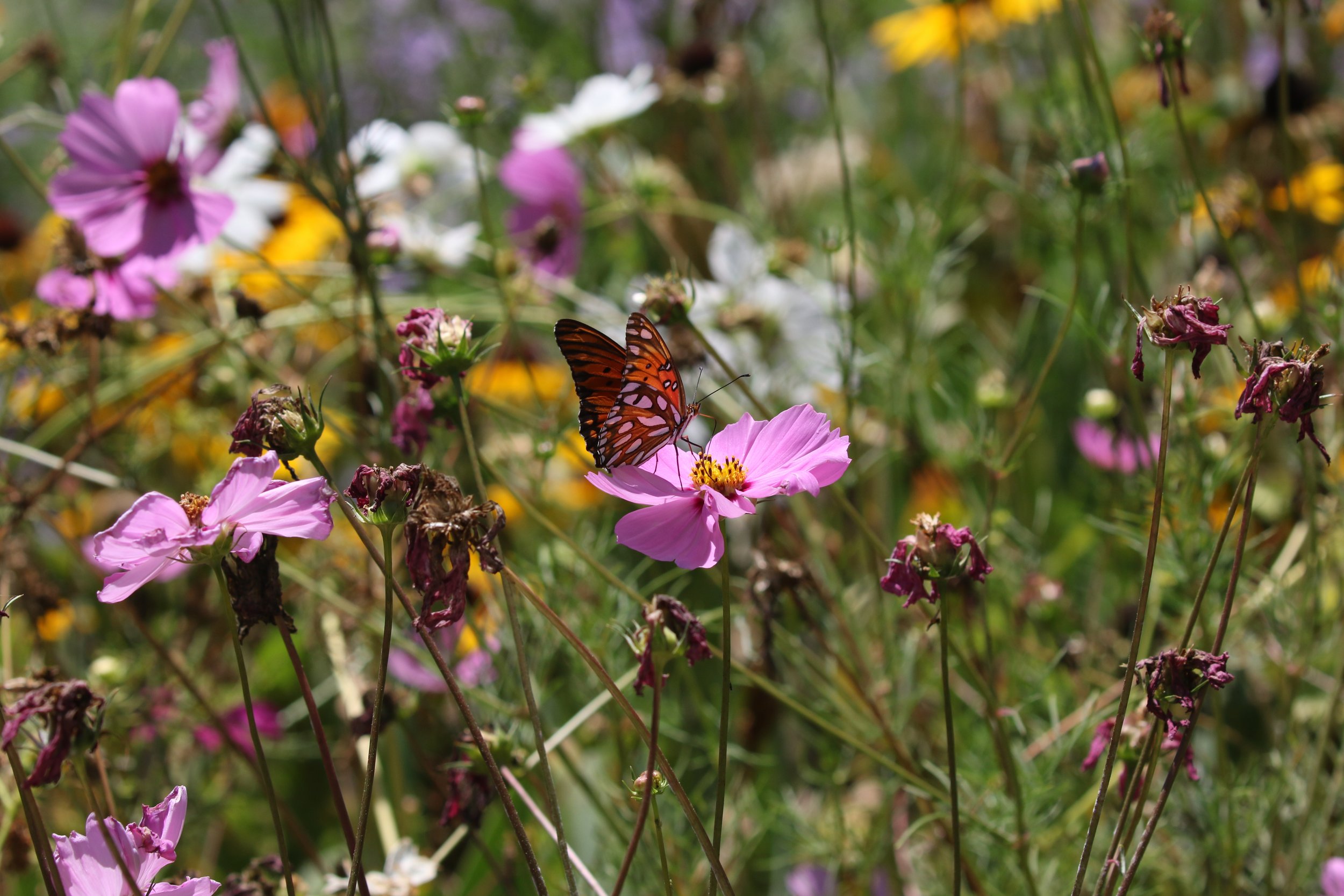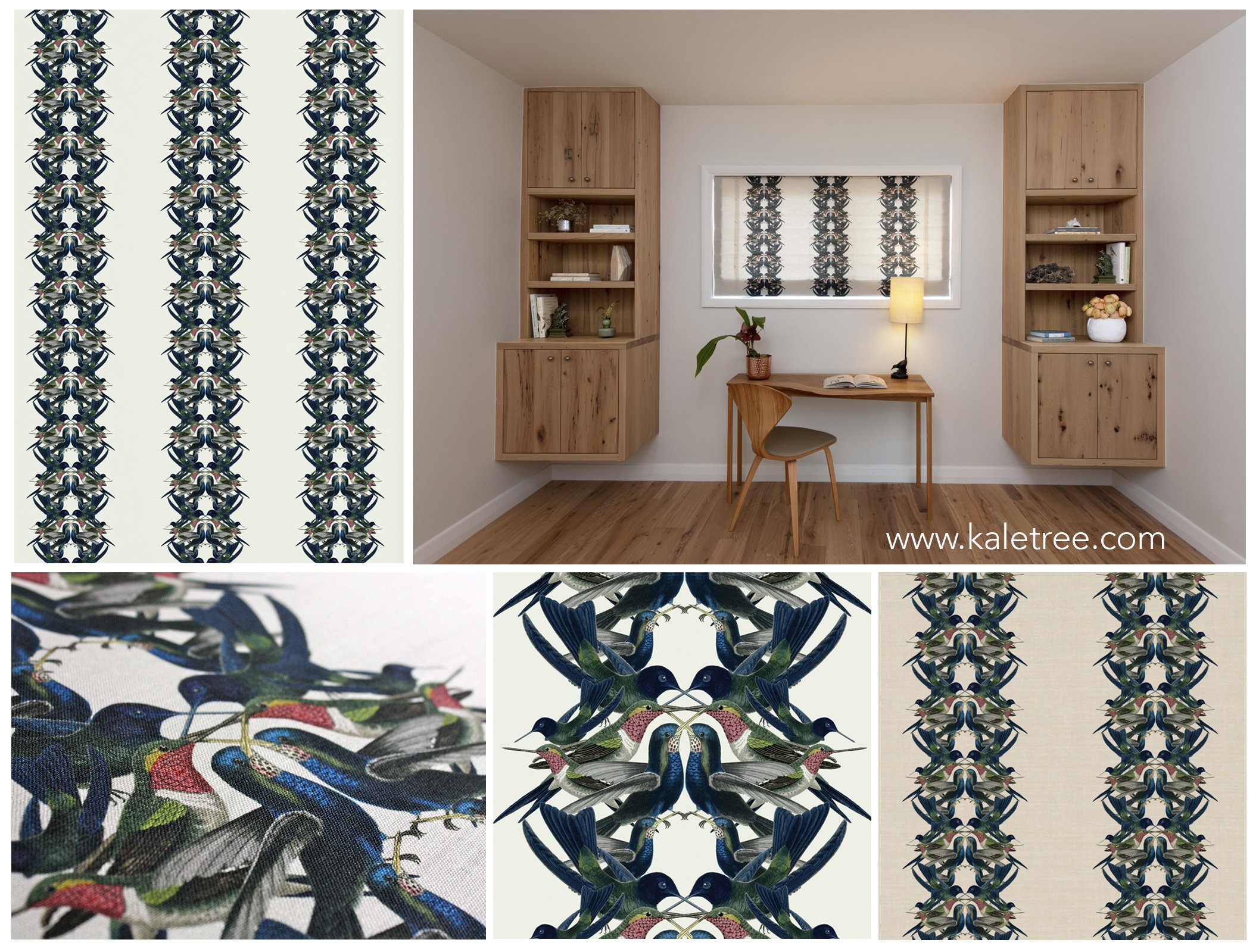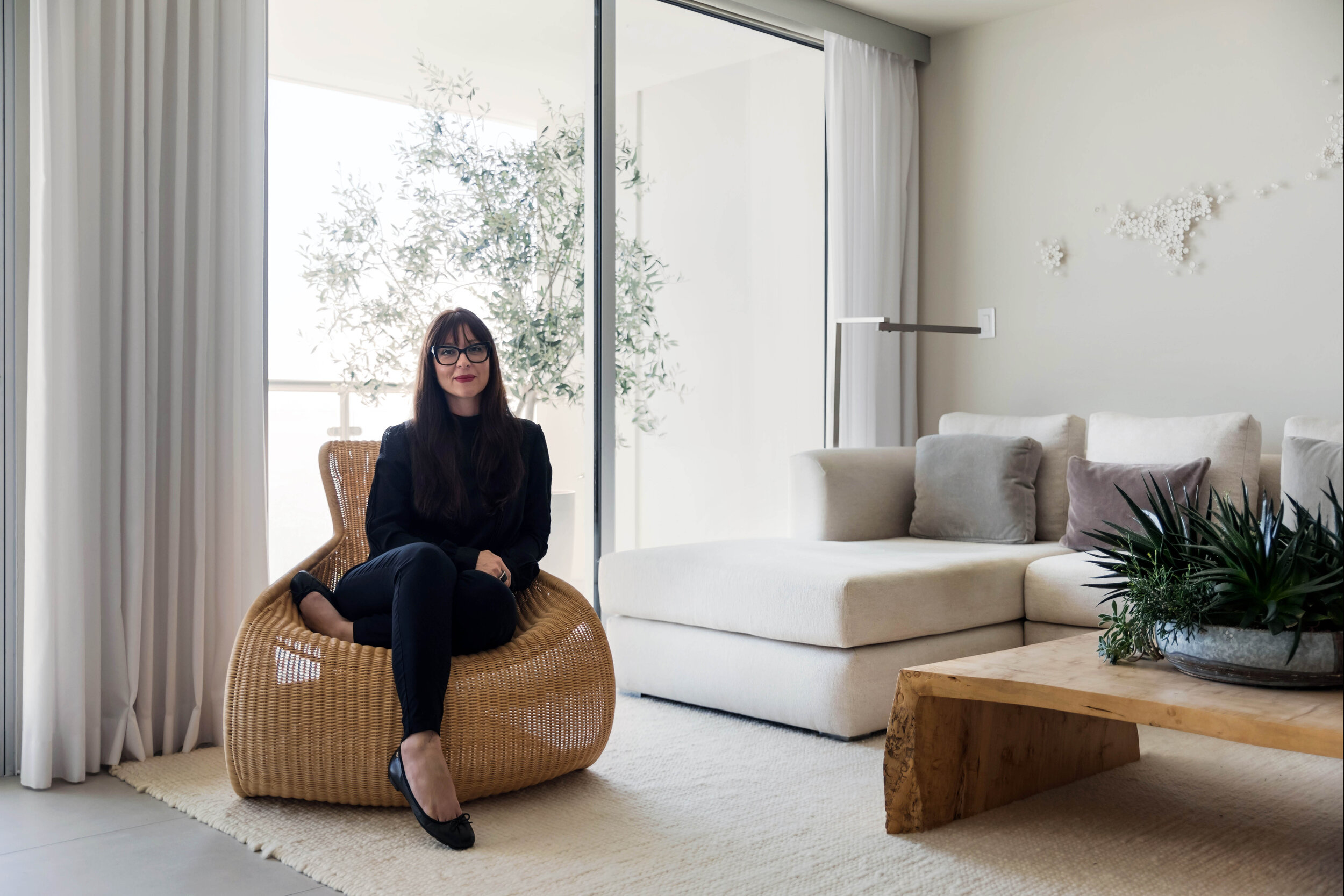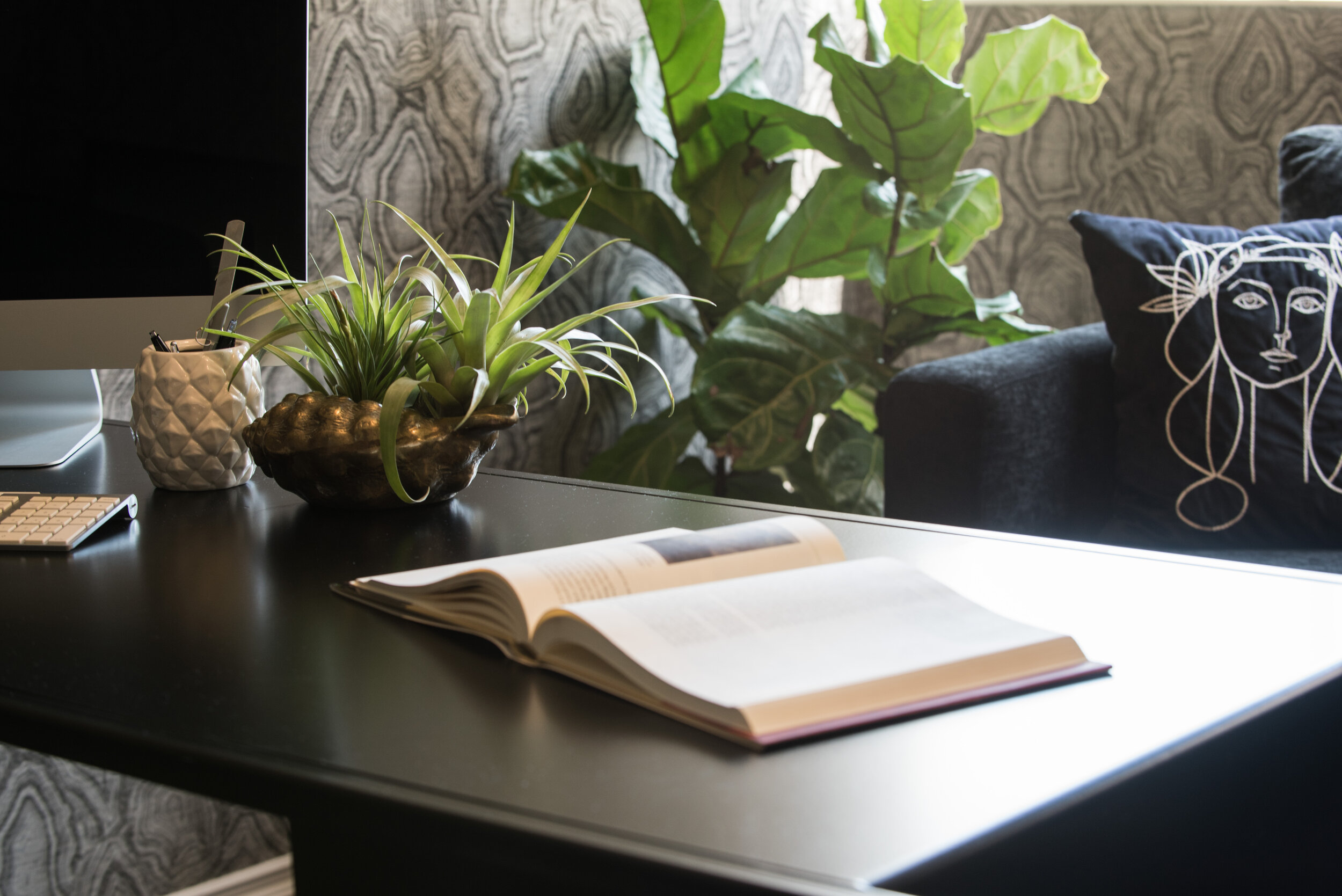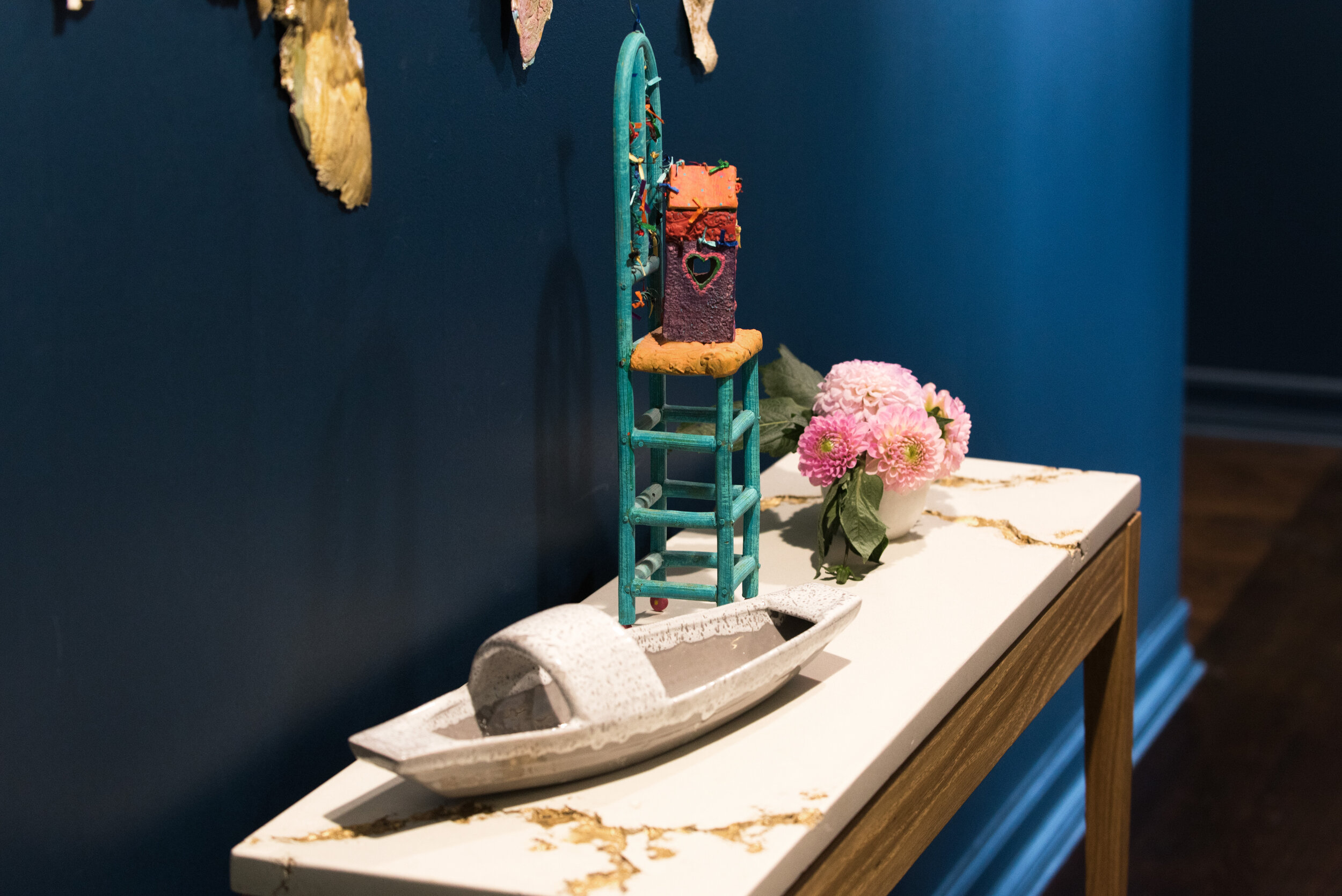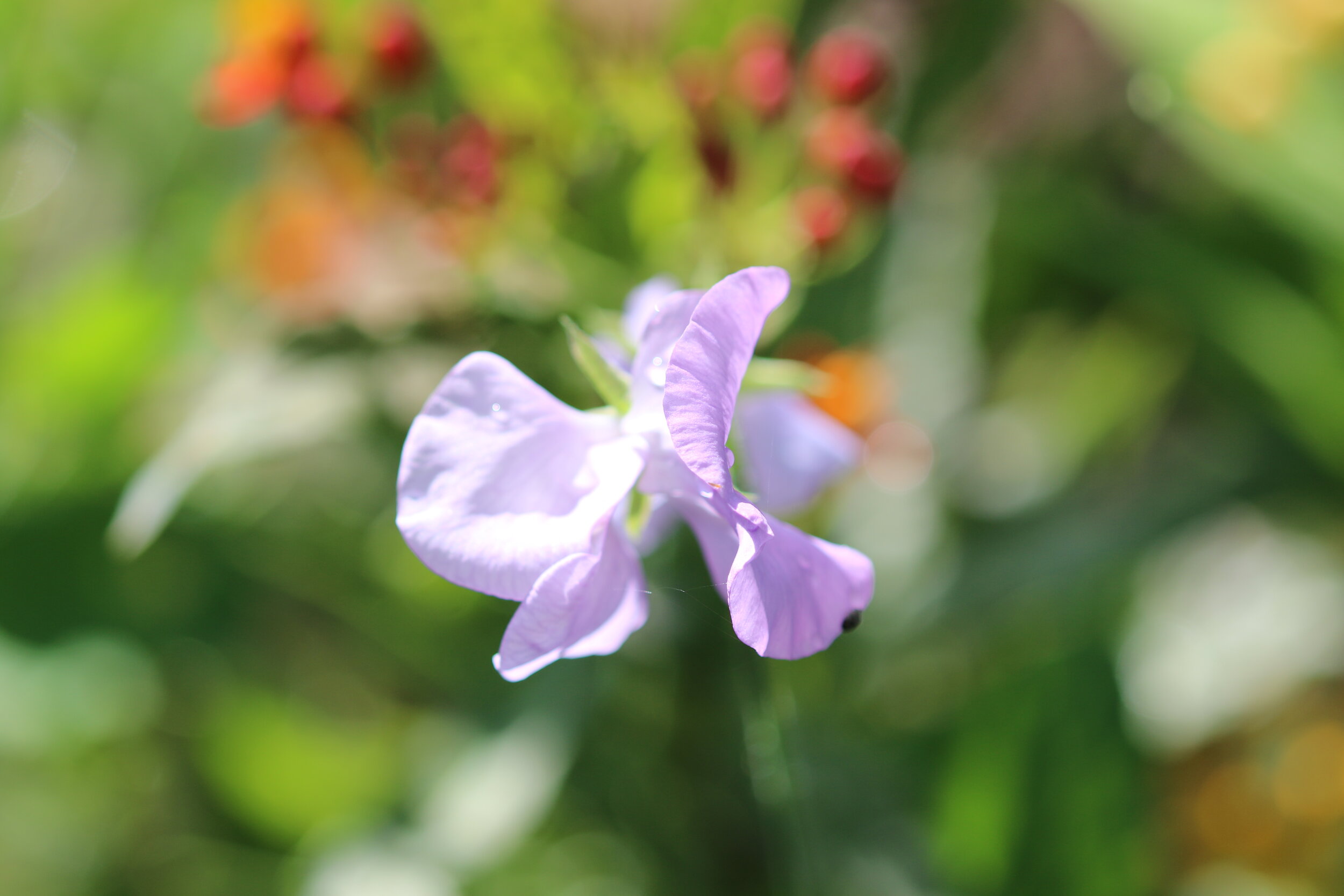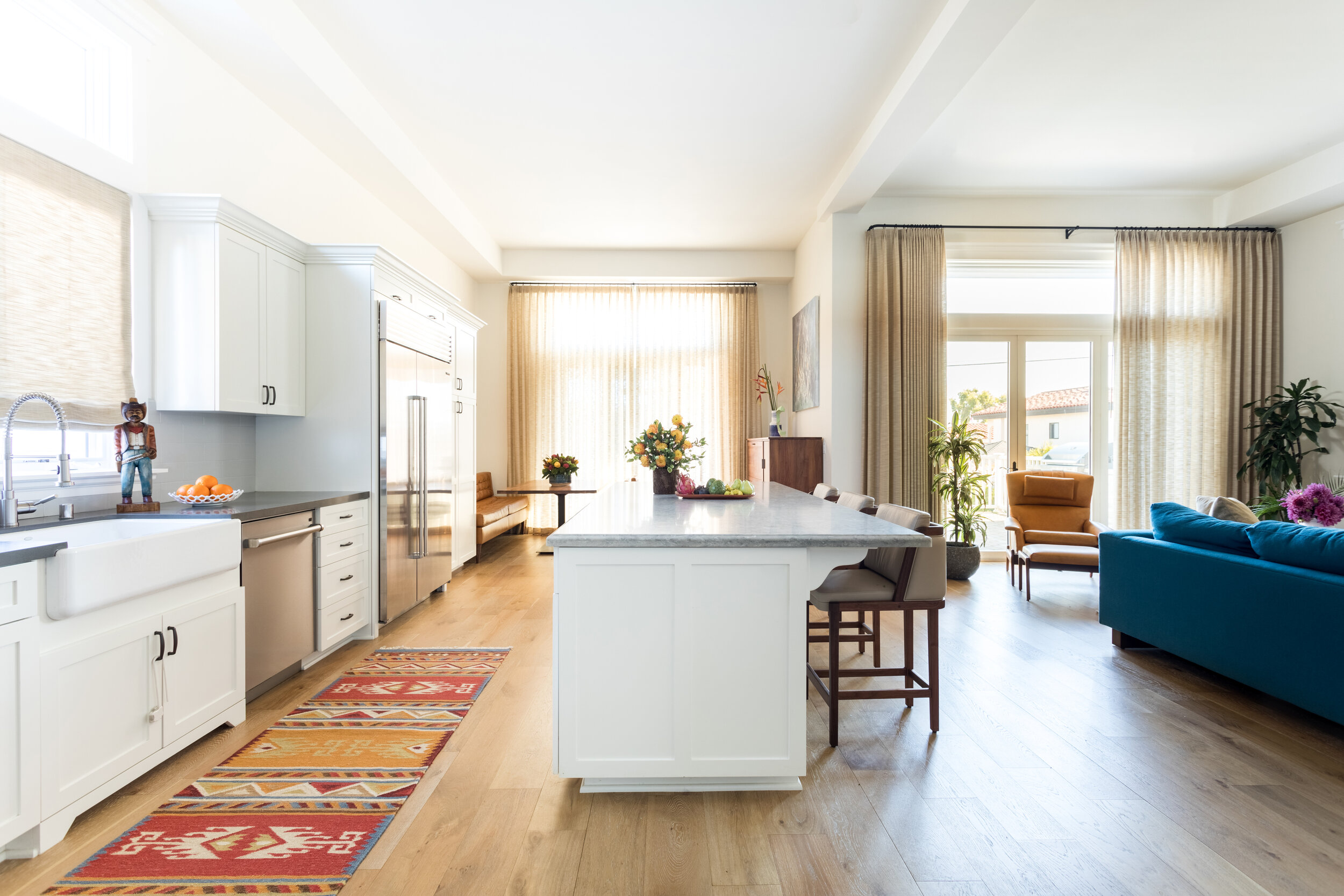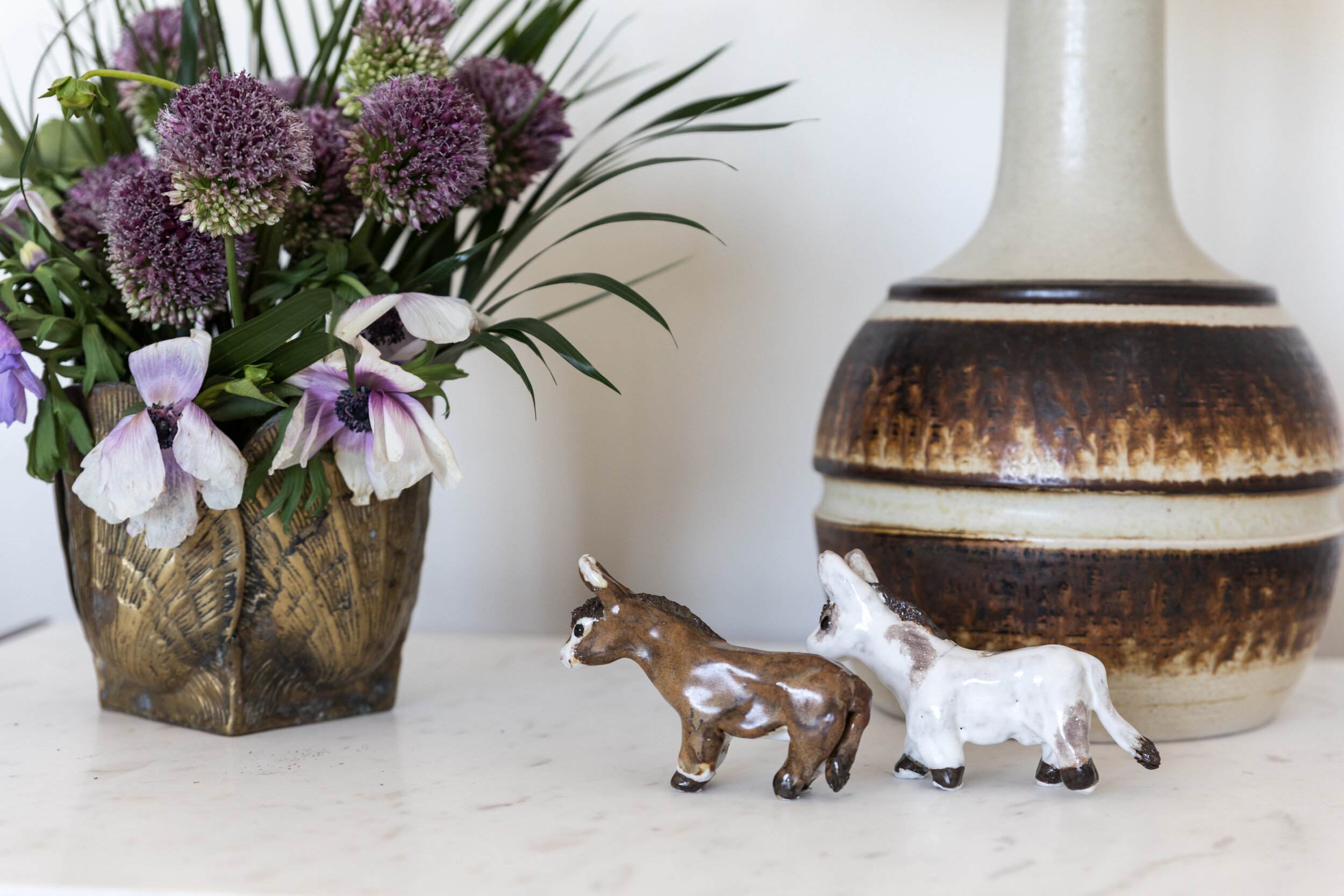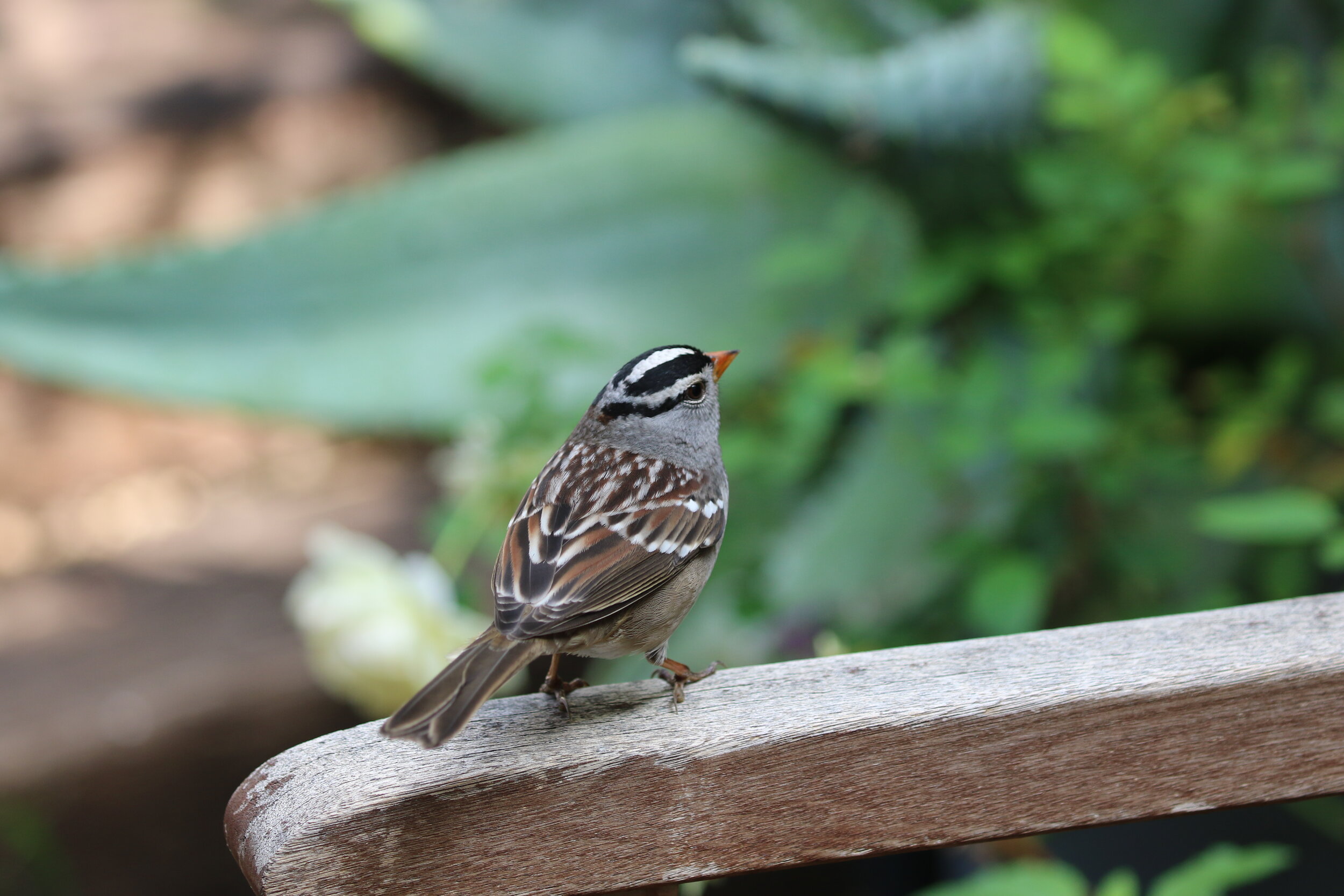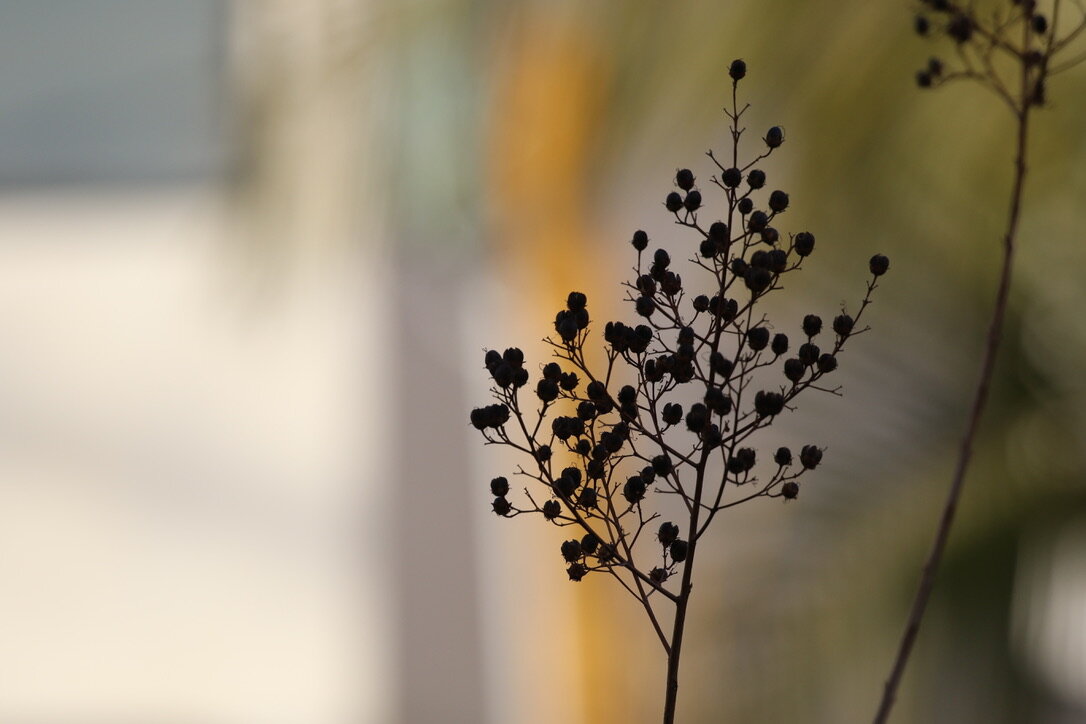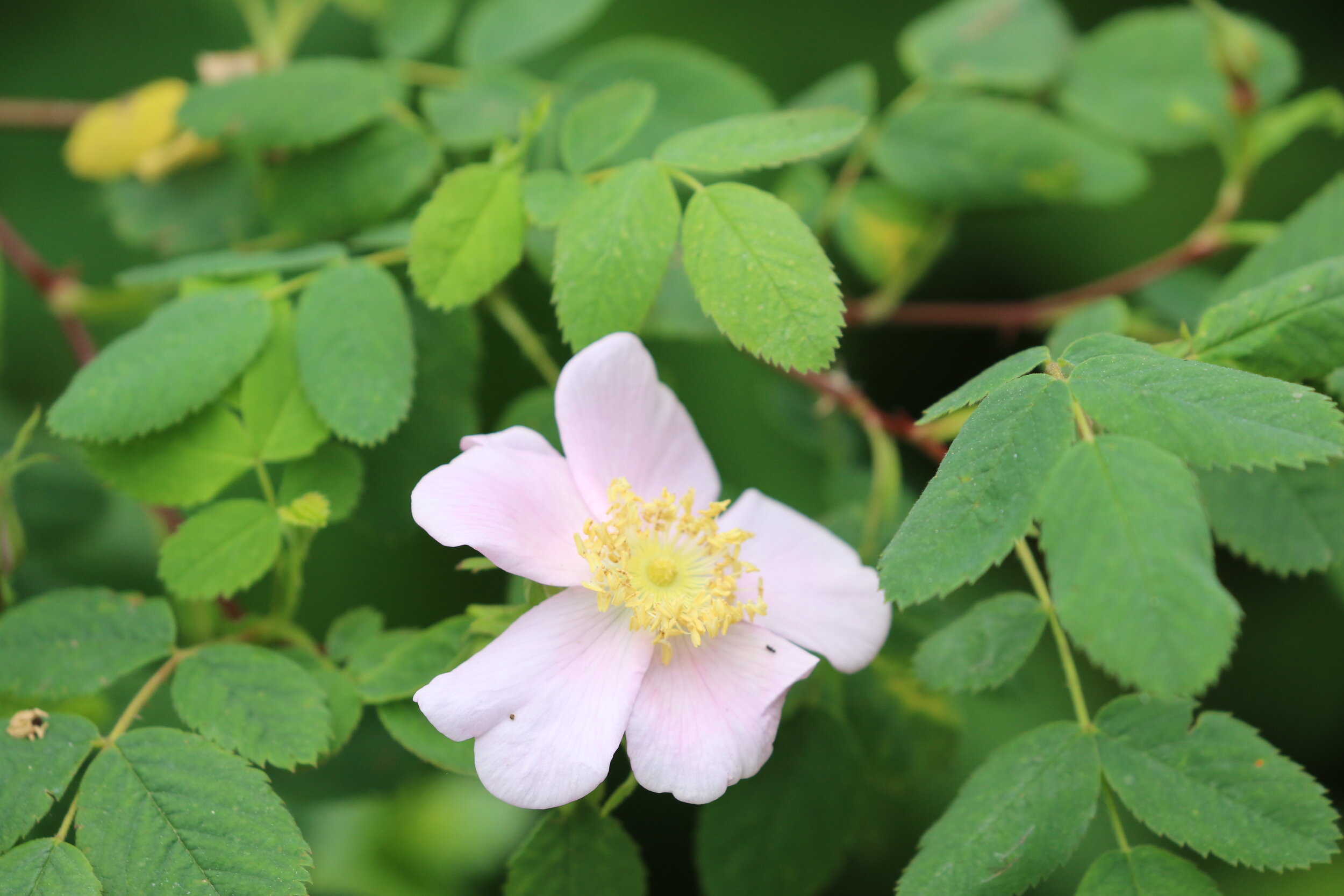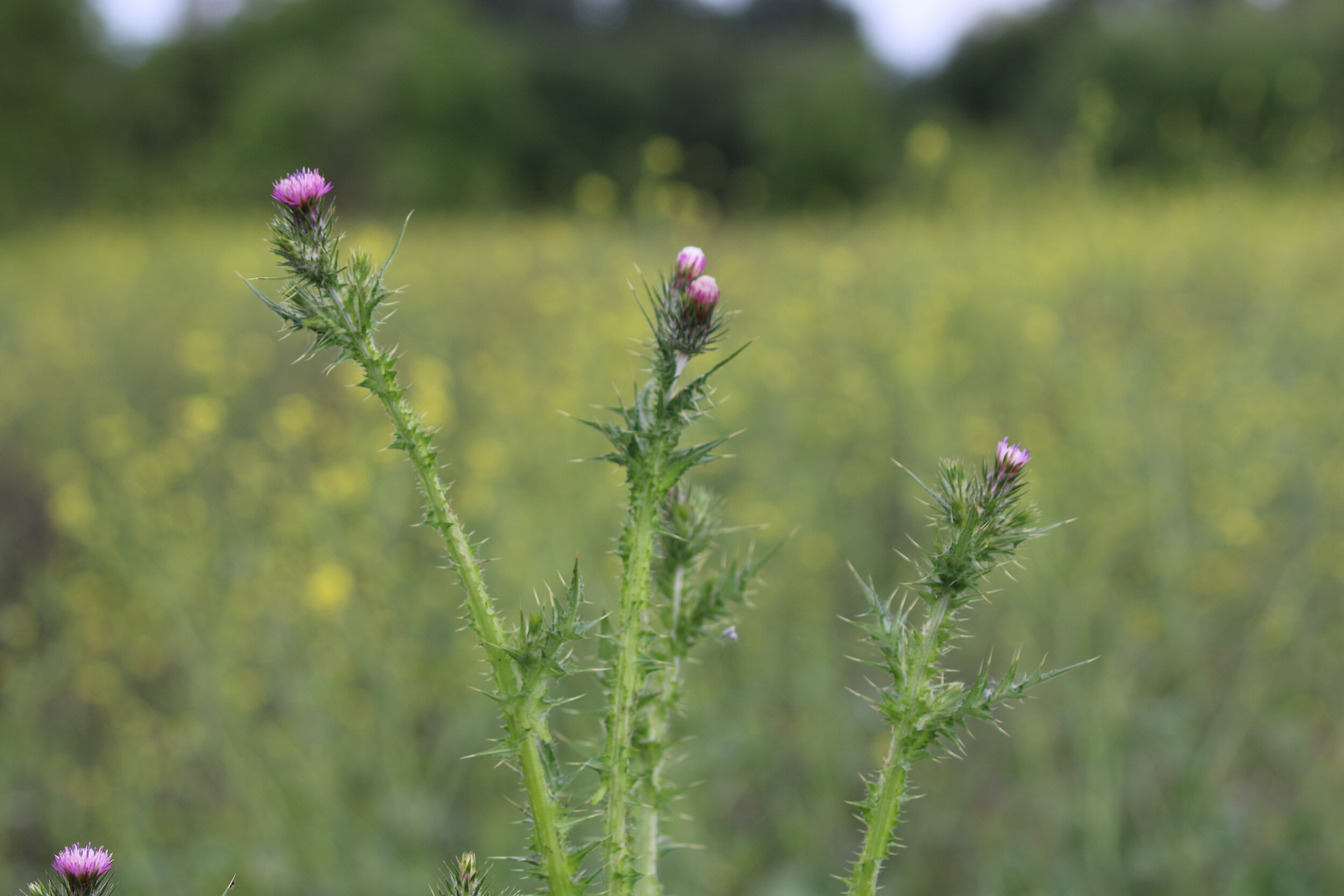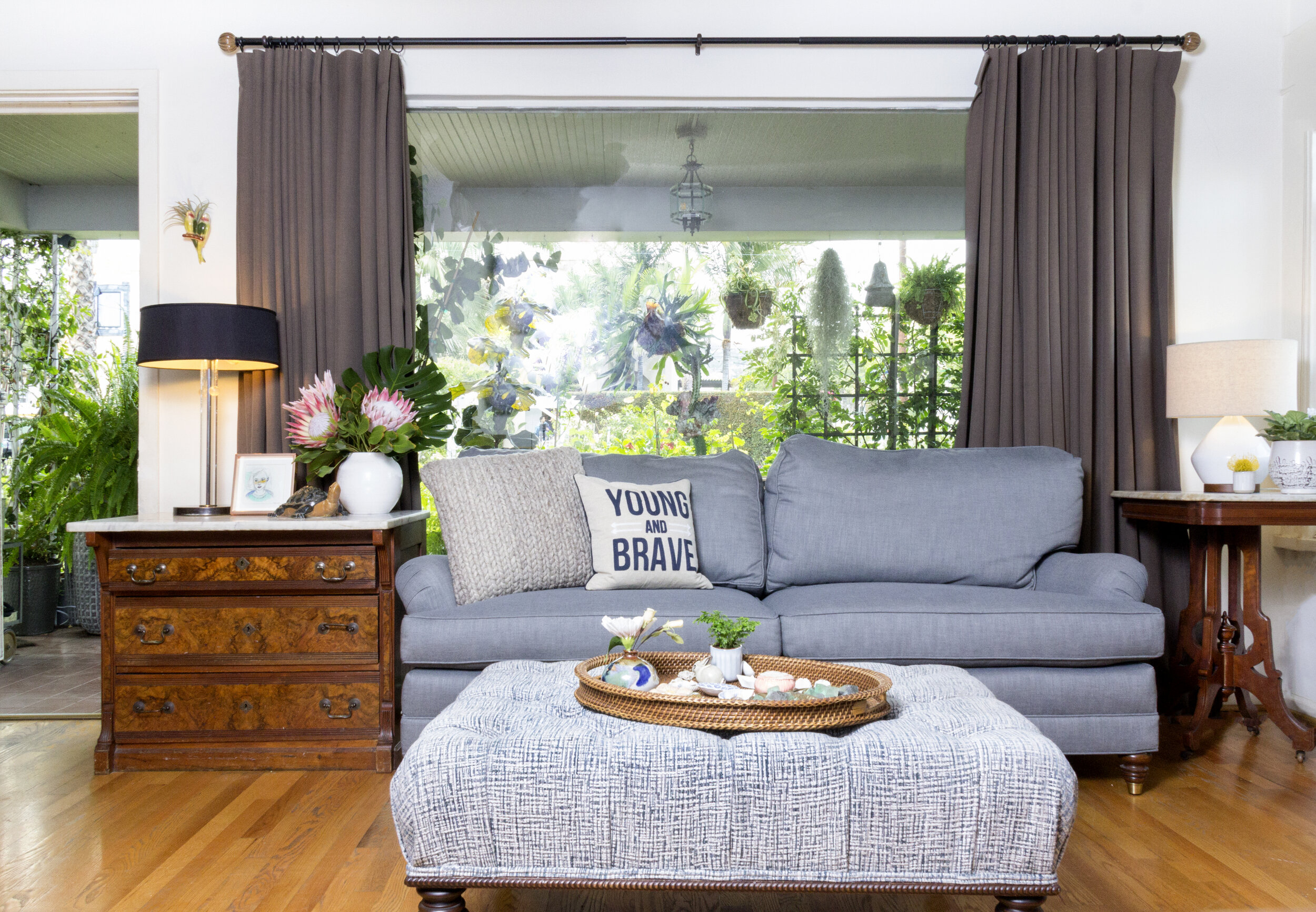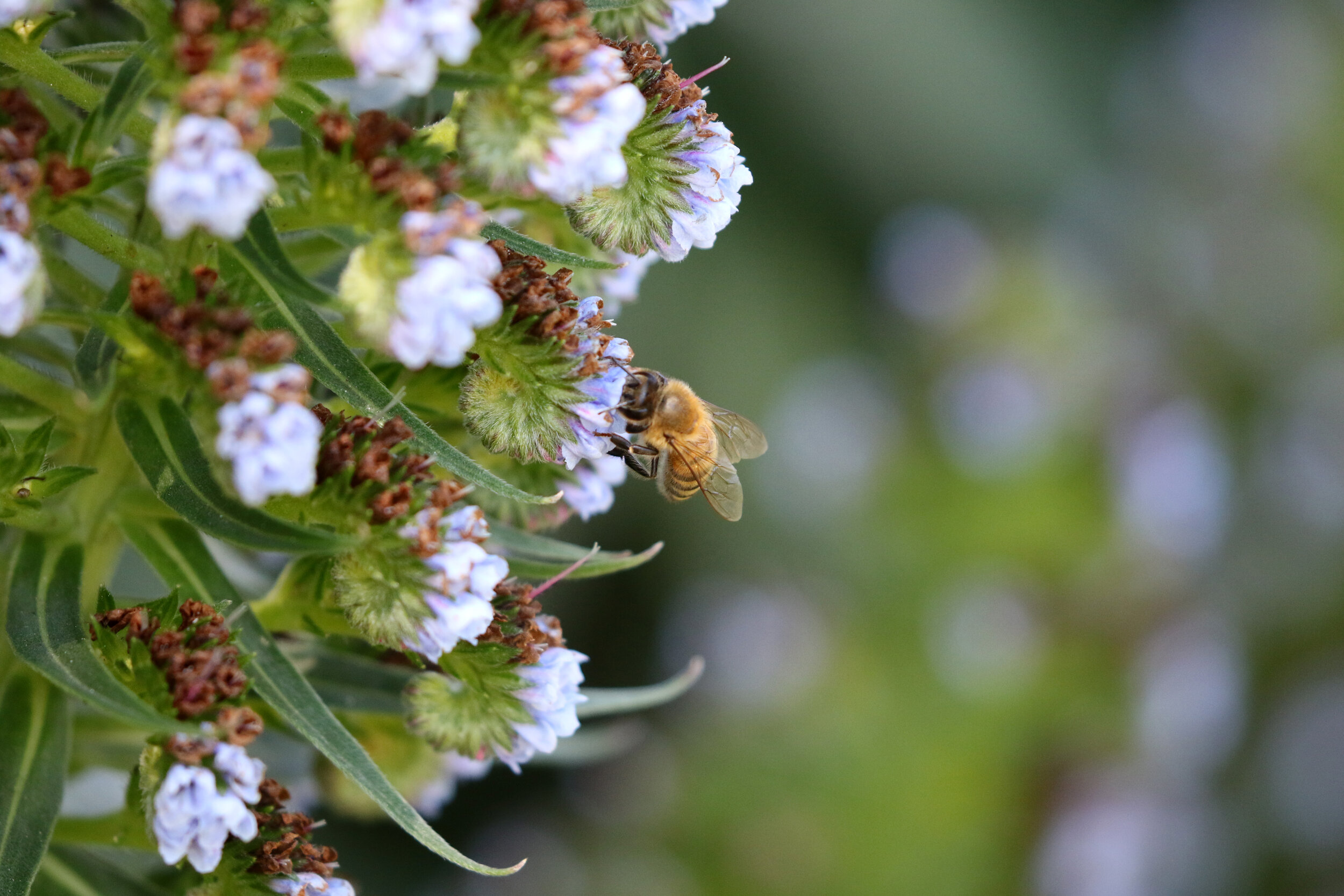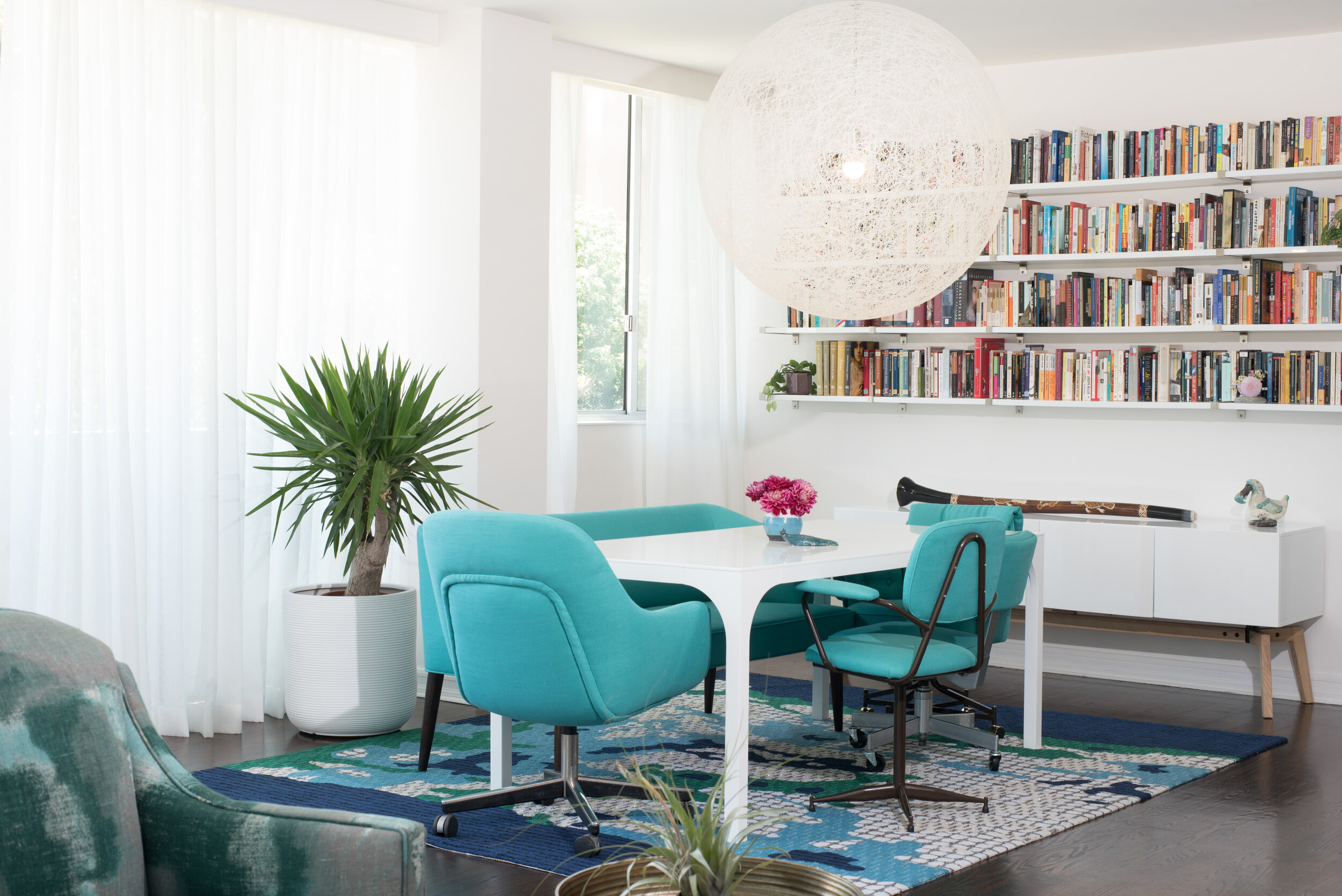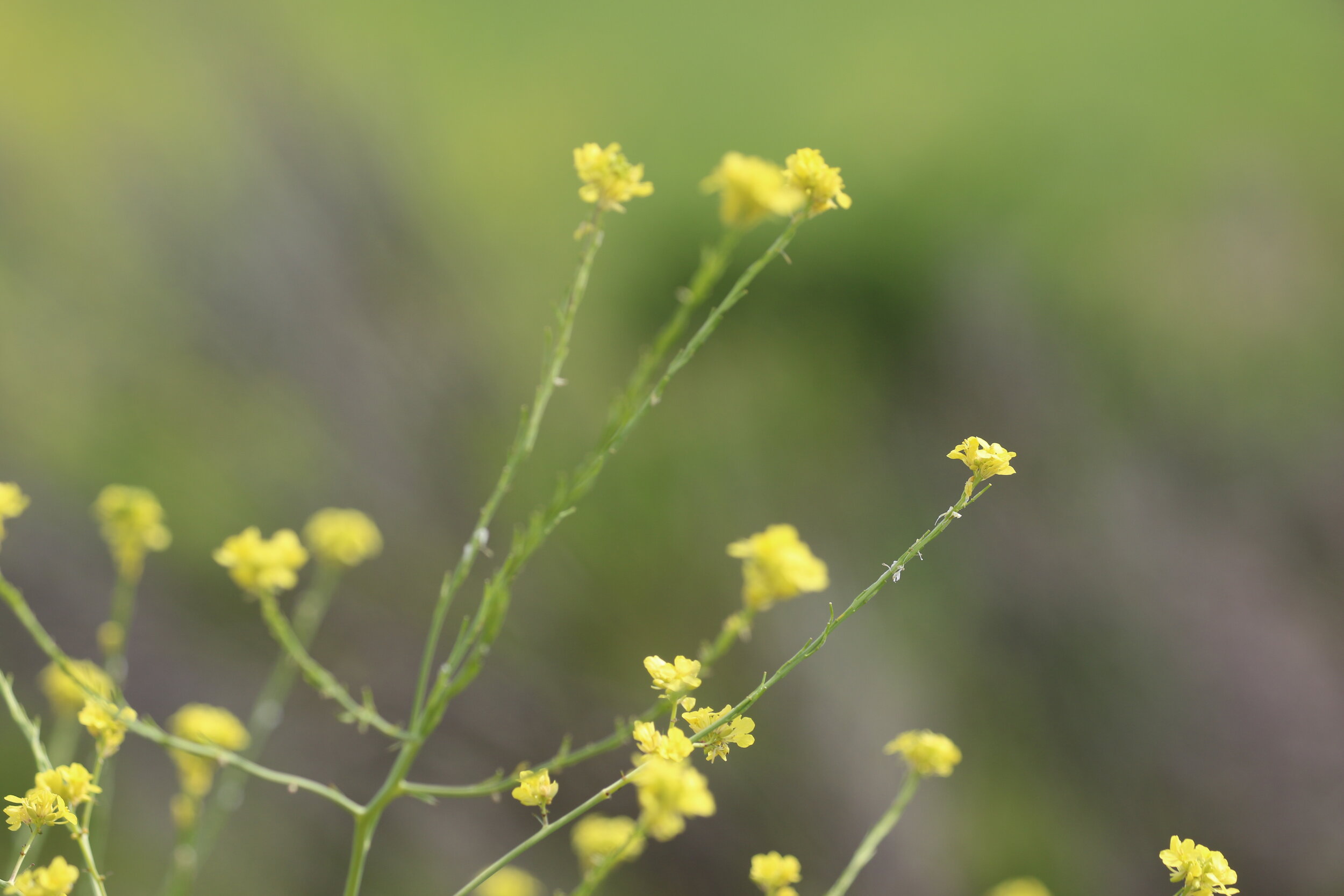Wildfire Preparedness: Home Hardening, Defensible Space and CA Native Plantings
/An American Crow (Corvus brachyrhynchos) rests above the trees in the Verdugo Mountains.
The California landscape is beautiful and unique, home to a plethora of plants and animals found nowhere else in the world. The Giant Sequoia and Coastal Redwood are majestic, and awe-inspiring trees found only in California. The General Sherman tree (a giant sequoia) found in Sequoia national park is thought to be the largest living tree on earth, measuring 274.9 ft high(1) and is estimated to be 2200 years old.(2)
Costa's hummingbird (Calypte costae) rests on Woolly blue curls (Trichostema lanatum).
The California floristic province is an area that stretches along the coast and comprises most of the state.(3) Conservation International defines this province as a biodiversity hot spot for the high number of plants that are endemic to the region (61% of California's plant life is found nowhere else in the world).(4)
A Marine Blue butterfly (Leptotes marina).
These distinct natural wonders and the beautiful Mediterranean climate make California a desirable place to live; it is important as residents of this beautiful state that we all play our part in conserving it.
Red Box picnic area, recovering after the Bobcat Fire.
Wildfires in California are increasing in size, frequency, and intensity, with the two largest wildfires in California history occurring in 2020 and 2021.(5) Human-made changes to the natural environment play a significant role in this increase. Two prominent examples are climate change and increased construction in the area that transitions between developed and undeveloped land, known as the Wildland Urban Interface (WUI).(6)
California Fan Palm (Washingtonia filifera) slowly recovering from burns in the Anza Borrego State Park.
It's important that we become more knowledgeable and work together within our local community to reduce the risk of wildfires. Sarah Barnard, Interior Designer, LEED, and WELL AP, recently achieved her Wildfire Defense Certificate to increase her awareness and preparedness for wildfires and expand her education as a Certified California Naturalist. The United States Green Building Council - Los Angeles (USGBC-LA) hosted the Wildfire Defense Landscaper Certificate Program in partnership with the Theodore Payne Foundation for Wild Flowers & Native Plants.(7)
Migrating Monarch butterflies (Danaus plexippus) roosting.
USGBC-LA's mission is to utilize the built environment "transform Southern California into a more sustainable region for all"(8) through a series of educational programs, workshops, and community initiatives. The Theodore Payne Foundation for Wild Flowers & Native Plants is a non-profit organization whose goal is "to transform our region into sustainable, healthy communities" by "educating all people about the role native plants play in the local ecology, their place in our gardens, and how everyone can take part in making Southern California more life-sustaining."(9)
California Buckwheat (Eriogonum fasciculatum).
Designing our homes and their surroundings with wildfire prevention in mind is extremely important in California. Built structures commonly burn before vegetation, ignited by wind-blown embers, radiant heat, or direct flame contact. The WUI (areas of land where houses and nature blend together) is becoming more dense, growing by about 2 million acres per year.(10) Currently, more than 60,000 communities within the WUI are at risk from wildfire in California,(11) and it is estimated that this number will increase to six times as many in the next 30 years.(12)
A Townsend's Warbler (Setophaga townsendi ) in California Live Oak tree (Quercus agrifolia).
Fire Hazard Severity Zones (FHSZ) are mapped and utilized by the California Department of Forestry and Fire Protection (CAL FIRE) to determine what communities are more at risk from wildfires, and what steps can be taken to reduce that risk through regulations regarding construction and defensible space. These maps also determine if the state, local government, or an individual is responsible for maintaining these requirements.(13) "If you live in a State Responsibility Area (SRA), you are responsible for ensuring that your property is in compliance with California's building and fire codes that call for homeowners to take proactive steps to protect their property from a wildfire."(14)
Scrub Jay (Aphelocoma californica) rests on a neighboring roof.
Wildfire protection has become such an important issue that Governor Gavin Newsom signed Assembly Bill 38, which requires “the seller of any real property located in a high or very high fire hazard severity zone to provide a prescribed disclosure notice to the buyer, if the home was constructed before January 1, 2020, of information relating to fire hardening improvements on the property and a list of specified features that may make the home vulnerable to wildfire and flying embers and which features, if any, that exist on the home of which the seller is aware. The bill, on or after July 1, 2025, would require the disclosure notice to also include the State Fire Marshal’s list of low-cost retrofits. The bill would also require a seller who has obtained a specified final inspection report to provide to the buyer a copy of that report or information on where a copy may be obtained.” (15)
The CalFire website has more information about requesting a Defensible Space Inspection as well as a FHSZ Viewer to help identify if a property is located in a high or very high fire hazard severity zone.
Designing our homes and their surroundings with wildfire prevention in mind is extremely important in California.
The concept of defensible space is one step we can take to protect our homes from wildfires. This strategy involves dividing the area around the home into a series of zones to create a buffer between the building and surrounding vegetation. Hardscape (pathways, gutters, etc.) maintenance, such as regularly clearing access roads, pathways, and gutters from debris that may ignite from falling embers, is an important component of defensible space. Ignition from wind-blown embers is a primary source of homes catching fire. Hardscape maintenance also includes trimming tree branches so that they are at least ten feet from the roof and relocating woodpiles to at least 30 feet from the house. Cal Fire offers a defensible space assessment for homeowners to help them decide what changes they may need to make in the area surrounding their property.
A California Thrasher (Toxostoma redivivum ) perched on Lemondade Berry (Rhus integrifolia).
In March 2020, the city of Malibu (which is located within a FHSZ), introduced The Fire-Resistant Landscaping Ordinance,(16) which restricts the kind of vegetation that can be planted around a home as a means to reduce the risk and spread of fires within the community.
A Lesser Goldfinch (Spinus psaltria ) feeds on Chia (Salvia columbariae).
While "any plant will burn under the right conditions,"(17) some plant species native to California have evolved in the dry climate to retain moisture and do not ignite as easily or contribute to fueling the intensity of wildfires as much as plants that contain a lot of oils, and resins. If kept well irrigated, spaced out, and regularly cleared of debris that may be combustible, these native plants can play a role in creating defensible space around our homes as well as providing habitat for wildlife and pollinators.(18)
Lemondade Berry (Rhus integrifolia).
Some of Sarah's favorite fire-resistant plants in her garden include the California Live Oak (Quercus agrifolia), an evergreen tree that has thick bark that insulates against heat and a dense canopy that resists ignition by flying embers;(19) these trees can live up to 250 years. The Lemonade Berry (Rhus integrifolia) is a drought-tolerant evergreen shrub that is fairly fire resistant and can contribute to creating a boundary that intercepts flying embers, and its berries are also a significant food source for local wildlife.(20)
Toyon (Heteromeles arbutifolia).
Toyon (Heteromeles arbutifolia) is a beautiful perennial shrub that is easy to grow and can be utilized as an excellent hedge plant. Toyon is fire-resistant when given enough water, and its flowers and berries attract a variety of moths, butterflies, and birds.
A Red-tailed Hawk (Buteo jamaicensis) sitting on wood fence.
Home "Hardening" is another step we can take to protect our homes from wildfires. Home Hardening focuses on the material elements of the building and how they can be maintained to minimize the risk of ignition. Built components of Home Hardening include using Class A non-combustible roofing materials; as well as sealing off entry points for embers by installing non-combustible leaf guards on gutters, metal vents, and shutters, and covering the chimney with non-combustible corrosion-resistant metal mesh screen. Windows also need to be considered when hardening your home as they can break due to heat, creating entry points for embers. Steps to reduce this risk include installing dual pane windows, limiting the number and size of windows facing vegetation, and installing screens.
A Mule deer (Odocoileus hemionus) grazing on Purisima Island Mallow (Malva 'Purisima') under the shade of a California Live Oak tree (Quercus agrifolia).
California is a beautiful place to live, and we can all work within our local community towards positive solutions that help protect our homes and the environment against wildfires. Our design studio is deeply inspired by nature, and we cherish the diverse ecosystems found in California and draw from their beauty.
Works Cited
1. “The Largest Trees in the World.” National Parks Service, U.S. Department of the Interior, https://www.nps.gov/seki/learn/nature/largest-trees-in-world.htm.
2. “General Sherman Tree (U.S. National Park Service).” National Parks Service, U.S. Department of the Interior, https://www.nps.gov/places/000/general-sherman-tree.htm.
3. “Hotspot: California on the Edge.” National Parks Service, U.S. Department of the Interior, https://www.nps.gov/goga/learn/management/index.htm.
4. “Explore the Biodiversity Hotspots.” CEPF, https://www.cepf.net/our-work/biodiversity-hotspots.
5. Top 20 Largest California Wildfires. https://www.fire.ca.gov/media/4jandlhh/top20_acres.pdf.
6. “What Is the WUI?” U.S. Fire Administration, 8 June 2022, https://www.usfa.fema.gov/wui/what-is-the-wui.html.
7. Johnson, Erin. “Wildfire Defense Certificate: Landscaper Module.” United States Green Building Council Los Angeles Chapter, Sept 2022, https://usgbc-la.org/
8. “Our Mission - USGBC-La.” USGBC, 4 Aug. 2022, https://usgbc-la.org/our-mission/.
9. “About.” Theodore Payne Foundation, https://theodorepayne.org/about/.
10. Li, Shu, et al. “Mapping the Wildland-Urban Interface in California Using Remote Sensing Data.” Nature News, Nature Publishing Group, 6 Apr. 2022, https://www.nature.com/articles/s41598-022-09707-7.
11. Li, Shu, et al. “Mapping the Wildland-Urban Interface in California Using Remote Sensing Data.” Nature News, Nature Publishing Group, 6 Apr. 2022, https://www.nature.com/articles/s41598-022-09707-7.
12. “California Properties at Risk of Wildfire Expected to See Sixfold Increase in 30 Years.” Los Angeles Times, Los Angeles Times, 17 May 2022, https://www.latimes.com/california/story/2022-05-16/california-properties-at-risk-of-wildfire-expected-to-grow.
13. California Department of Forestry and Fire Protection (CAL FIRE). “Fire Hazard Severity Zones.” Cal Fire Department of Forestry and Fire Protection, https://osfm.fire.ca.gov/divisions/community-wildfire-preparedness-and-mitigation/wildfire-preparedness/fire-hazard-severity-zones/.
14. “Fire Safety Laws.” Ready for Wildfire, 22 July 2021, https://www.readyforwildfire.org/more/fire-safety-laws/.
15. “AB-38 Fire Safety: Low-Cost Retrofits: Regional Capacity Review: Wildfire Mitigation.” Bill Text - AB-38 Fire Safety: Low-Cost Retrofits: Regional Capacity Review: Wildfire Mitigation., https://leginfo.legislature.ca.gov/faces/billTextClient.xhtml?bill_id=201920200AB38.
16. “Fire-Resistant Landscaping .” Site ID, https://www.malibucity.org/1035/Fire-Resistant-Landscaping.
17. “Preparing Home Landscaping.” University of California, Agriculture and Natural Resources, https://ucanr.edu/sites/fire/Prepare/Landscaping/.
18. “Habitat Gardening.” California Native Plant Society, 27 June 2022, https://www.cnps.org/gardening/native-design-basics/habitat-gardening.
19. David. “Fire-Resistant Landscaping.” California Native Plant Society, 17 May 2022, https://www.cnps.org/flora-magazine/fire-resistant-landscaping-23654.
20. “Lemonade Berry, Rhus Integrifolia.” California Native Plant Society, https://calscape.org/Rhus-integrifolia-(Lemonade-Sumac).
Further Resources
https://usgbc-la.org/programs/wildfire-defense-education-and-tours/
https://usgbc-la.org/wp-content/uploads/2022/04/Wildfire-Toolkit-2022-1.pdf
Sarah Barnard, WELL AP + LEED AP, is a leading designer of personalized, sustainable spaces that support mental, physical, and emotional wellbeing. She creates highly personalized, restorative spaces that are deeply connected to art and the preservation of the environment. An advocate for consciousness, inclusivity, and compassion in the creative process, Sarah has appeared in Architectural Digest, Elle Décor, Vogue, HGTV, and many other publications. In 2017 Sarah was honored as a “Ones to Watch” Scholar by the American Society of Interior Designers (ASID).




